Pussy888 pussy888 สล็อตเว็บไซต์ตรง เว็บไซต์สล็อตออนไลน์รวมค่าย นำเข้าจากต่างแดน
Pussy888 สล็อต สล็อตเว็บไซต์ตรง การเล่นสล็อตออนไลน์ผ่านเว็บไซต์สล็อต ที่ส่งตรงประสิทธิภาพจากเว็บนั่นจะช่วยทำให้นักเดิมพันสามารถเข้าใกล้และสัมผัสกับเงินรางวัลได้ดีมากกว่า วันนี้พวกเราจะมาชี้แนะ สล็อต เว็บไซต์ใหญ่pg ค่ายเกมสล็อตที่เก็บรวบรวมเกมการพนันประเภทสล็อตออนไลน์ที่นำเข้าจากต่างประเทศ เป็นเกมการพนันที่มีความน่าสนใจเป็นอย่างมาก เพราะว่าในค่ายเกมสล็อตออนไลน์ บนเว็บแห่งนี้มีเกมให้เลือกหลากหลายประเภท แต่ละเกมเป็นเกมที่มีแบบอย่างการลงพนันที่สามารถทำได้อย่างราบรื่น ทั้งยังมีคุณภาพในการลงเดิมพัน สามารถใช้งานได้อย่างสะดวกเร็วทันใจทำเงินได้จริง
ทำไมจะต้องเลือกใช้บริการ สล็อตเว็บตรง พุซซี่888 พุซซี่888
พุซซี่888 ถ้าเกิดคุณเป็นผู้ที่เริ่มต้นในแวดวงสล็อตอนไลน์ บางทีก็อาจจะยังไม่ทราบว่าน่าจะลงเดิมพันกับเว็บไซต์สล็อตออนไลน์ชนิดใด ที่พวกเราได้กระทำชี้แนะเกมสล็อตจากค่าย pussy888 พุซซี่888 ด้วยเหตุว่าเป็นค่ายเกมที่มีชื่อเสียงเลื่องลือเปิดให้บริการมาอย่างช้านาน มีความน่าสนใจทั้งในเรื่องเกี่ยวกับการให้บริการรวมทั้งตัวเกมที่มีเอกลักษณ์เป็นของตนเอง เกมสล็อตออนไลน์เป็นเกมที่มีชื่อเสียง อย่างมากในเรื่องที่เกี่ยวข้องกับการหาเงิน แม้ว่าจะเป็นผู้ที่ไม่เคยเล่นเกมพนันออนไลน์มาก่อนเลยก็ตามถ้าใช้บริการเกมสล็อตออนไลน์ของเว็บแห่งนี้ ยืนยันว่าจะสามารถทำเงินได้อย่างไม่ต้องสงสัย
ความปลอดภัยของระบบที่เก็บข้อมูลของนักพนันได้เป็นอย่างดี
แน่ๆว่าสิ่งที่นักพนันผู้คนจำนวนไม่ใช้น้อยหนักใจ เป็นการเข้าใช้บริการผ่านทางเว็บ อาจจะมีการเกิดปัญหาระบบไม่อาจจะเข้าถึงได้ หรือข้อมูลถูกขายให้กับเว็บอื่น สร้างปัญหาแก่ผู้ใช้บริการ แต่ทางเว็บไซต์ของพวกเราได้จัดสร้างระบบข้างหลังบ้าน รวมทั้งมีการเข้ารหัสเผื่อให้ ข้อมูลของลูกค้าเป็นความลับ อีกทั้งการฝากหรือถอนการเข้าใช้บริการ
 ทางเว็บไซต์ของพวกเรายังมีระบบระเบียบที่สร้างความปลอดภัย เพื่อนักเดิมพันสามารถใช้บริการกับทางเว็บนี้ได้โดยง่าย การเล่นเกมสล็อตออนไลน์ผ่านเว็บไซต์ที่มีมาตรฐานระดับสากล เป็นเว็บไซต์ที่มีคุณภาพ ทำให้นักเดิมพันที่เข้าใช้บริการ สามารถเปิดประสบการณ์ใหม่ในการพนันได้อย่างดีเยี่ยม แล้วก็มั่นใจได้ว่าระบบการเข้าถึงเกมการพนันกลุ่มนี้ จะได้มีการปล่อยข้อมูลลูกค้า ทำให้คุณสามารถเข้าใช้งานได้โดยไม่ต้องเป็นกังวล พวกเราไม่มีขัดขวางการเข้าถึง นักเดิมพันที่เข้ามาใช้บริการผ่านทางเว็บไซต์นี้จะสามารถเข้าเล่นได้อย่างไม่มีสะดุดตลอด 1 วัน
ทางเว็บไซต์ของพวกเรายังมีระบบระเบียบที่สร้างความปลอดภัย เพื่อนักเดิมพันสามารถใช้บริการกับทางเว็บนี้ได้โดยง่าย การเล่นเกมสล็อตออนไลน์ผ่านเว็บไซต์ที่มีมาตรฐานระดับสากล เป็นเว็บไซต์ที่มีคุณภาพ ทำให้นักเดิมพันที่เข้าใช้บริการ สามารถเปิดประสบการณ์ใหม่ในการพนันได้อย่างดีเยี่ยม แล้วก็มั่นใจได้ว่าระบบการเข้าถึงเกมการพนันกลุ่มนี้ จะได้มีการปล่อยข้อมูลลูกค้า ทำให้คุณสามารถเข้าใช้งานได้โดยไม่ต้องเป็นกังวล พวกเราไม่มีขัดขวางการเข้าถึง นักเดิมพันที่เข้ามาใช้บริการผ่านทางเว็บไซต์นี้จะสามารถเข้าเล่นได้อย่างไม่มีสะดุดตลอด 1 วัน
ข้อดีของการสมัครเป็นสมาชิกเล่น สล็อต ผ่านเว็บไซต์ สล็อตเว็บตรง
เมื่อพอใจที่จะทำลงทะเบียนเป็นสมาชิกเข้าเล่นเกมสล็อตออนไลน์ พุซซี่888 กับเว็บนี้ หลายคนบางครั้งอาจจะสงสัยว่าถ้าใช้บริการ ลงทะเบียนเป็นสมาชิก สล็อตเว็บไซต์ตรง จะได้รับสิทธิพิเศษรวมทั้งได้รับผลดีใดบ้างจากการเล่นเกมสล็อตออนไลน์บนเว็บแห่งนี้ วันนี้เราได้นำข้อดีของการลงทะเบียนเป็นสมาชิกใช้บริการของเว็บนี่มานำเสนอ
• สล็อต สล็อต เว็บไซต์ตรงเครดิตฟรี ทางเว็บไซต์มีการแจกเครดิตฟรีให้กับนักเดิมพันได้เอาไปใช้จ่าย ไม่ว่าจะในการทดลองเล่น หรือการลงเดิมพันจริงทางเว็บมอบเครดิตฟรีเหล่านี้ให้ เพื่อให้นักเดิมพันประหยัดเงินลงทุนของตนเอง
 • สล็อตเว็บไซต์ตรง ทดสอบเล่น ระบบทดสอบเล่นเพื่อช่วยฝึกหัดความสามารถ ให้นักพนันได้ทำความเข้าใจกับการเล่นเกมสล็อตออนไลน์ซะก่อนลงเดิมพัน เพื่อเป็นการเซฟเงินทุน และก็ลดช่องทางที่จะเสียเงินเสียทองลงทุนทั้งผองไปโดยใช่เหตุ
• สล็อตเว็บไซต์ตรง ทดสอบเล่น ระบบทดสอบเล่นเพื่อช่วยฝึกหัดความสามารถ ให้นักพนันได้ทำความเข้าใจกับการเล่นเกมสล็อตออนไลน์ซะก่อนลงเดิมพัน เพื่อเป็นการเซฟเงินทุน และก็ลดช่องทางที่จะเสียเงินเสียทองลงทุนทั้งผองไปโดยใช่เหตุ
• สล็อต pussy888 เว็บตรงยุโรป การเล่นสล็อตออนไลน์ที่ส่งตรงจากต่างประเทศนั้นช่วยทำให้นักพนันเข้าไกล้กับเงินรางวัลได้ดีมากเพิ่มขึ้น เพราะเหตุว่าการส่งสัญญาณภาพโดยตรงจากต่างประเทศจะก่อให้นักพนันได้เห็นถึงความแตกต่าง แล้วก็เพิ่มอรรถรสสำหรับการทำเงินมากยิ่งขึ้น
เว็บดีมีคุณภาพลงทะเบียนสมัครสมาชิกเข้าใช้งานยากหรือเปล่า
pussy888 อีกหนึ่งข้อกังวลใจของผู้เล่น เมื่อเข้าใช้บริการกับทางเว็บที่มีมาตรฐานสูง บางทีก็อาจจะตื่นตระหนกว่าจำเป็นที่จะต้องกรอกข้อมูลหรือยืนยันตัวตนอย่างซับซ้อน แต่จำต้องบอกเลยว่าทางเว็บไซต์ของพวกเรามีการเปิดระบบ ให้สามารถเข้าใช้งานได้โดยง่าย เช่นเดียวกันกับการลงทะเบียนเป็นสมาชิกเข้าใช้บริการ ก็สามารถกรอกข้อมูลข้างในไม่กี่ขั้นตอน ผ่านทางหน้าเว็บได้โดยตัวเอง หรือจะทำติดต่อกลับทางเจ้าหน้าที่เพื่อกระทำสมัครสมาชิกก็สามารถทำเป็นด้วยเหมือนกัน กรรมวิธีสมัครสมาชิกก็สะดวกสบายสามารถรับรองได้ข้างใน 3 นาที อีกทั้งเมื่อลงทะเบียนเข้ามาใช้บริการยังได้รับเครดิตฟรี สล็อต เป็นโบนัสแรกเข้าต้อนรับเพื่อให้สมาชิกได้ใช้งานโดยไม่ต้องควักเงินในกระเป๋าของคุณ ด้วยเหตุดังกล่าวการร่วมเป็นส่วนหนึ่งส่วนใดกับทางเว็บแห่งนี้ จึงต้องควรค่าแก่การใช้งานและมีนักเดิมพันมากมาย ที่เมื่อเข้าใช้บริการและก็กระทำบอกต่อให้กับผู้เล่น ที่กำลังมองหาวิถีทางการผลิตรายได้ที่เหมาะสมที่สุด แล้วก็การเสนอแนะ
เพื่อนพ้องเข้ามาใช้บริการ ก็ยังสร้างรายได้ให้กับผู้เล่นได้อีกด้วยนะ
จากที่กล่าวมาทั้งสิ้นจะเห็นได้ว่า เว็บของพวกเราเป็นเว็บที่นึกถึงผู้ใช้งานอย่างมาก คุณประโยชน์สูงสุดที่ผู้ใช้บริการจะได้รับ เป็นสิ่งที่ช่วยทำให้นักเดิมพันสามารถบรรลุเป้าหมายจากการเล่นเกม สล็อตออนไลน์จากค่ายแห่งนี้ได้ การเข้าถึงเกมการเดิมพันสล็อตออนไลน์จะเป็นสิ่งที่ง่ายดายเมื่อเผชิญกับเว็บไซต์ของพวกเรา มาร่วมเป็นส่วนใดส่วนหนึ่งกับทางเว็บไซต์เพื่อรับโบนัสแจ๊กพ็อต พี่กำลังรอเจ้าของ เข้ามาค่อยคว้าเงินรางวัลเป็นอย่างมากจากเว็บไซต์สล็อตออนไลน์ พุซซี่888 ที่ดีที่สุดแห่งนี้กันเถอะ
ดาวน์โหลด พุชชี่888 พุซซี่888 มีให้เลือกกว่า 200 เกม 1 ตุลา 66 Uwe โอนเงินสด pussy888โบนัสแรกเข้า Top 18
ขอขอบพระคุณ Ref. pussy888









 บาคาร่าเว็บไหนดี sexy บาคาร่า sexybaccarat168.com 17 สิงหา 2022 บาคาร่าเว็บตรง บาคาร่าคือป๊อก 8 ป๊อก 9 ที่เมิงเคยเล่นนั่นแหละ คนนิยมเล่นบาคาร่าออนไลน์168 บาคาร่า888 และ บาคาร่า1688 กันเยอะ เพราะบาคาร่าออนไลน์ได้เงินจริง สำหรับคนที่กำลังมองหาเกมสำนักงานลงทุน
บาคาร่าเว็บไหนดี sexy บาคาร่า sexybaccarat168.com 17 สิงหา 2022 บาคาร่าเว็บตรง บาคาร่าคือป๊อก 8 ป๊อก 9 ที่เมิงเคยเล่นนั่นแหละ คนนิยมเล่นบาคาร่าออนไลน์168 บาคาร่า888 และ บาคาร่า1688 กันเยอะ เพราะบาคาร่าออนไลน์ได้เงินจริง สำหรับคนที่กำลังมองหาเกมสำนักงานลงทุน  slot online สมัครบาคาร่า ในรูปแบบใหม่ที่ฉีกกฎเดิมๆจากที่เคยได้เห็นมาก่อน การแจกไพ่โดยดีลเลอร์สาวสวยทั้งโลกมารวมไว้ตรงนี้ สิ่งที่สมาชิกจะได้รับไม่ใช้เป็นเพียงอาหารตาเท่านั้น แต่ว่ายังมีความคมชัด ความเที่ยงตรงของระบบที่ถูกสรรค์สร้างภายใต้ทีมงานบริษัทผู้พัฒนาซอฟแวร์รวมทั้งทีมงานเกมมิ่งสุดยอดมารอควบคุมระบบหลังบ้าน เราเป็นผู้ให้บริการบาคาร่าออนไลน์แบบเรียลไทม์ ส่งตรงจากบ่อน Casino ผู้เล่นสามารถดูไพ่ที่แจก ก่อนเริ่มพนันได้ในเวลา 20-30 วินาที Baccarat Online เป็นเกมส์ที่มีเสน่ห์ มีนักพนันเล่นกันจำนวนมาก ผู้เล่นยังสามารถรับเงินรางวัลจากเกมส์ไปได้ ภายในช่วงระยะเวลาไม่กี่วินาทีก่อนที่จะเกมส์การประลองจะจบลงอีกด้วย และก็ผู้เล่นจะได้รับประสบการณ์ การเล่นคาสิโนออนไลน์ที่ปลอดภัย โดยมีระบบระเบียบสำรวจที่ได้รับการยินยอมรับในระดับสากล สมัครเล่นบาคาร่ากับ SexyAuto168 รับโบนัสแรกเข้าในทันที และก็ลุ้นรับโบนัสอีกเยอะมากกับโปรโมชั่นระดู พึงพอใจเล่นบาคาร่ากับพวกเราติดต่อพวกเราได้ตลอด 24 ช.มัธยม เมื่อท่านให้ความสนใจอยากทำเล่นเกมบาคาร่า sexy บาคาร่า สำหรับเกมบาคาร่าเป็นลักษณะของเกมคาสิโนก็จำเป็นต้องกระทำสมัครเป็นสมาชิก บาคาร่า หรือกระทำเดินทางไปยังสถานที่ที่เปิดให้บริการท่านก็สามารถกระทำการใช้งานและสามารถกระทำลงทุนได้ เลือกวิถีทางใดมา 1 หนทางรวมทั้งเลือกผู้ให้บริการที่มีความปลอดภัยสูงที่สุด เมื่อเรามีผู้ให้บริการที่มีความปลอดภัยมากที่สุดการลงทุนของเราก็จะมีความปลอดภัยและก็ได้โอกาสบรรลุผลสำเร็จสำหรับเพื่อการเล่นนั้นเอง หลักเกณฑ์สำหรับการเลือกเว็บไซต์สำหรับเพื่อการลงทุนหรือการใช้แรงงานเกี่ยวกับการทำงานพวกเรารู้ๆกันอยู่ว่าการพนันมีการเสี่ยงในว่าเกมนั้นท่านจะมีความถนัดสำหรับเพื่อการใช้งานมากน้อยแค่ไหนแม้กระนั้นต้องการสำหรับเพื่อการลงทุนย่อมมีการเสี่ยงอยู่ดีด้วยเหตุนี้หากท่านให้ความสนใจกับการใช้แรงงานจริงๆก็ต้องกระทำตรวจสอบข้อมูลแล้วก็ศึกษารายละเอียดเพื่อเลือกสิ่งที่เหมาะสมที่สุดให้แก่การลงทุนของตัวเองยิ่งเรามีแบบลงทุนที่ดีและก็มีคุณภาพมากแค่ไหน การลงทุนของพวกเราก็จะได้โอกาสบรรลุเป้าหมายได้รับกำไรกลับคืนมาตามสิ่งที่มีความต้องการของพวกเรามากมายแค่นั้นด้วยเหตุนั้นถ้าผู้ใดกันแน่สนใจกระทำใช้บริการก็สามารถกระทำการลงทะเบียนสมัครสมาชิกของเว็บที่ดีได้หรือกระทำการถามไถ่จากคนที่มีประสบการณ์สำหรับเพื่อการเล่นมาก่อนก็ได้เพื่อเขากระทำเสนอแนะว่าเว็บไซต์ที่ดีควรจะมีลักษณะเป็นอย่างไร ดังนั้นถ้าคนใดกันที่ได้เว็บไซต์ตรงนี้แล้วก็ทำลงทะเบียนสมัครสมาชิกถ้าเกิดไม่เคยทำการลงทะเบียนสมัครสมาชิกเราสามารถดูได้จากกระบวนการใช้งานของทางเว็บผู้ให้บริการนั้น ก็จะมีการชี้แนะการใช้งานให้เรากระทำการเลือกรวมทั้งกระทำลงทุนและรวยมากขึ้นนั่นเอง แต่ว่าเมื่อกระทำลงทะเบียนสมัครสมาชิก บาคาร่า เป็นระเบียบเรียบร้อยรวมทั้งสามารถเข้าใช้งานก็เข้าไปหมวดคำว่าคาสิโนและก็เลือกกเล่นเกมบาคาร่าหรือ บาคาร่า168 ที่ท่านอยากท่านก็สามารถทำการลงทุนและสามารถกระทำใช้งานได้แล้วเพียงเท่านี้ท่านก็สามารถทำลงทุนแล้วก็อย่าลืมว่าการมีสติแล้วก็ช่วยพวกเราได้รับกำไรกลับมาง่ายขึ้นเพียรพยายามมีสติสัมปชัญญะสำหรับในการเล่นแล้วก็การลงทุนทุกคราวและก็ผลที่ได้จะเป็นผลลัพธ์ที่ดีอย่างไม่ต้องสงสัย
slot online สมัครบาคาร่า ในรูปแบบใหม่ที่ฉีกกฎเดิมๆจากที่เคยได้เห็นมาก่อน การแจกไพ่โดยดีลเลอร์สาวสวยทั้งโลกมารวมไว้ตรงนี้ สิ่งที่สมาชิกจะได้รับไม่ใช้เป็นเพียงอาหารตาเท่านั้น แต่ว่ายังมีความคมชัด ความเที่ยงตรงของระบบที่ถูกสรรค์สร้างภายใต้ทีมงานบริษัทผู้พัฒนาซอฟแวร์รวมทั้งทีมงานเกมมิ่งสุดยอดมารอควบคุมระบบหลังบ้าน เราเป็นผู้ให้บริการบาคาร่าออนไลน์แบบเรียลไทม์ ส่งตรงจากบ่อน Casino ผู้เล่นสามารถดูไพ่ที่แจก ก่อนเริ่มพนันได้ในเวลา 20-30 วินาที Baccarat Online เป็นเกมส์ที่มีเสน่ห์ มีนักพนันเล่นกันจำนวนมาก ผู้เล่นยังสามารถรับเงินรางวัลจากเกมส์ไปได้ ภายในช่วงระยะเวลาไม่กี่วินาทีก่อนที่จะเกมส์การประลองจะจบลงอีกด้วย และก็ผู้เล่นจะได้รับประสบการณ์ การเล่นคาสิโนออนไลน์ที่ปลอดภัย โดยมีระบบระเบียบสำรวจที่ได้รับการยินยอมรับในระดับสากล สมัครเล่นบาคาร่ากับ SexyAuto168 รับโบนัสแรกเข้าในทันที และก็ลุ้นรับโบนัสอีกเยอะมากกับโปรโมชั่นระดู พึงพอใจเล่นบาคาร่ากับพวกเราติดต่อพวกเราได้ตลอด 24 ช.มัธยม เมื่อท่านให้ความสนใจอยากทำเล่นเกมบาคาร่า sexy บาคาร่า สำหรับเกมบาคาร่าเป็นลักษณะของเกมคาสิโนก็จำเป็นต้องกระทำสมัครเป็นสมาชิก บาคาร่า หรือกระทำเดินทางไปยังสถานที่ที่เปิดให้บริการท่านก็สามารถกระทำการใช้งานและสามารถกระทำลงทุนได้ เลือกวิถีทางใดมา 1 หนทางรวมทั้งเลือกผู้ให้บริการที่มีความปลอดภัยสูงที่สุด เมื่อเรามีผู้ให้บริการที่มีความปลอดภัยมากที่สุดการลงทุนของเราก็จะมีความปลอดภัยและก็ได้โอกาสบรรลุผลสำเร็จสำหรับเพื่อการเล่นนั้นเอง หลักเกณฑ์สำหรับการเลือกเว็บไซต์สำหรับเพื่อการลงทุนหรือการใช้แรงงานเกี่ยวกับการทำงานพวกเรารู้ๆกันอยู่ว่าการพนันมีการเสี่ยงในว่าเกมนั้นท่านจะมีความถนัดสำหรับเพื่อการใช้งานมากน้อยแค่ไหนแม้กระนั้นต้องการสำหรับเพื่อการลงทุนย่อมมีการเสี่ยงอยู่ดีด้วยเหตุนี้หากท่านให้ความสนใจกับการใช้แรงงานจริงๆก็ต้องกระทำตรวจสอบข้อมูลแล้วก็ศึกษารายละเอียดเพื่อเลือกสิ่งที่เหมาะสมที่สุดให้แก่การลงทุนของตัวเองยิ่งเรามีแบบลงทุนที่ดีและก็มีคุณภาพมากแค่ไหน การลงทุนของพวกเราก็จะได้โอกาสบรรลุเป้าหมายได้รับกำไรกลับคืนมาตามสิ่งที่มีความต้องการของพวกเรามากมายแค่นั้นด้วยเหตุนั้นถ้าผู้ใดกันแน่สนใจกระทำใช้บริการก็สามารถกระทำการลงทะเบียนสมัครสมาชิกของเว็บที่ดีได้หรือกระทำการถามไถ่จากคนที่มีประสบการณ์สำหรับเพื่อการเล่นมาก่อนก็ได้เพื่อเขากระทำเสนอแนะว่าเว็บไซต์ที่ดีควรจะมีลักษณะเป็นอย่างไร ดังนั้นถ้าคนใดกันที่ได้เว็บไซต์ตรงนี้แล้วก็ทำลงทะเบียนสมัครสมาชิกถ้าเกิดไม่เคยทำการลงทะเบียนสมัครสมาชิกเราสามารถดูได้จากกระบวนการใช้งานของทางเว็บผู้ให้บริการนั้น ก็จะมีการชี้แนะการใช้งานให้เรากระทำการเลือกรวมทั้งกระทำลงทุนและรวยมากขึ้นนั่นเอง แต่ว่าเมื่อกระทำลงทะเบียนสมัครสมาชิก บาคาร่า เป็นระเบียบเรียบร้อยรวมทั้งสามารถเข้าใช้งานก็เข้าไปหมวดคำว่าคาสิโนและก็เลือกกเล่นเกมบาคาร่าหรือ บาคาร่า168 ที่ท่านอยากท่านก็สามารถทำการลงทุนและสามารถกระทำใช้งานได้แล้วเพียงเท่านี้ท่านก็สามารถทำลงทุนแล้วก็อย่าลืมว่าการมีสติแล้วก็ช่วยพวกเราได้รับกำไรกลับมาง่ายขึ้นเพียรพยายามมีสติสัมปชัญญะสำหรับในการเล่นแล้วก็การลงทุนทุกคราวและก็ผลที่ได้จะเป็นผลลัพธ์ที่ดีอย่างไม่ต้องสงสัย QR Code ดียิ่งกว่า URL qrcode อย่างไร
QR Code ดียิ่งกว่า URL qrcode อย่างไร
 …
… ปันโปร โบนัสแตกง่ายอย่างยิ่ง ทุนต่ำ มั่งคั่งไม่ยากกับ Punpro777
ปันโปร โบนัสแตกง่ายอย่างยิ่ง ทุนต่ำ มั่งคั่งไม่ยากกับ Punpro777 นักเสี่ยงดวงท่านไหน ที่กำลังตามหาเกม
นักเสี่ยงดวงท่านไหน ที่กำลังตามหาเกม  ขอขอบคุณมากby
ขอขอบคุณมากby 



.png)

 …
… เว็บคาสิโนออนไลน์ สล็อตxo m.slotxo24hr.co 2 กุมภาพันธ์ 66 Timothy สล็อตxo 888 ทางเข้าเล่น slotxoสล็อต xo เวอร์ชั่นใหม่ Top 54
เว็บคาสิโนออนไลน์ สล็อตxo m.slotxo24hr.co 2 กุมภาพันธ์ 66 Timothy สล็อตxo 888 ทางเข้าเล่น slotxoสล็อต xo เวอร์ชั่นใหม่ Top 54


 เริ่มเล่นบาคาร่า หนแรกก็ช่วยคุณได้แน่ๆ เชื่อสิคุ้มมากๆ
เริ่มเล่นบาคาร่า หนแรกก็ช่วยคุณได้แน่ๆ เชื่อสิคุ้มมากๆ เว็บบาคาร่าที่ดีแน่ๆ ไม่สมควรละเลย
เว็บบาคาร่าที่ดีแน่ๆ ไม่สมควรละเลย คนไม่ใช่น้อยค้นหาเกมออนไลน์ที่จะเล่นเพื่อใส่ร้ายรื้นเริงรวมทั้งเครียดลดลงไปกับมัน แต่ว่าก็ไม่พบเกมที่ประทับจิตใจพวกเราเสียท่า ผู้คนเหล่านั้นก็ได้หันมาหาเกมพนันออนไลน์ที่ได้รับความนิยมอยู่ปัจจุบันนี้ และก็มีผู้คนจำนวนมากอ้างถึงว่ามันสามารถมอบเงินพวกเราได้จริงๆและเกมที่ได้รับการเสนอชื่อสูงที่สุด ก็บางทีอาจไม่พ้นเกม เว็บบาคาร่า
คนไม่ใช่น้อยค้นหาเกมออนไลน์ที่จะเล่นเพื่อใส่ร้ายรื้นเริงรวมทั้งเครียดลดลงไปกับมัน แต่ว่าก็ไม่พบเกมที่ประทับจิตใจพวกเราเสียท่า ผู้คนเหล่านั้นก็ได้หันมาหาเกมพนันออนไลน์ที่ได้รับความนิยมอยู่ปัจจุบันนี้ และก็มีผู้คนจำนวนมากอ้างถึงว่ามันสามารถมอบเงินพวกเราได้จริงๆและเกมที่ได้รับการเสนอชื่อสูงที่สุด ก็บางทีอาจไม่พ้นเกม เว็บบาคาร่า บาคาร่าเว็บไหนดี บาคาร่าออนไลน์ Sexyauto168.com 31 กันยายน 2022 Baccaratเว็บตรง บาคาร่าคือป๊อก 8 ป๊อก 9 ที่เราเคยเล่นกันนี่แหละ เล่นง่าย คนนิยมเล่นบาคาร่า168 บาคาร่า888 และ บาคาร่า1688 กันเยอะแยะ เนื่องจากบาคาร่าออนไลน์ได้เงินจริง
บาคาร่าเว็บไหนดี บาคาร่าออนไลน์ Sexyauto168.com 31 กันยายน 2022 Baccaratเว็บตรง บาคาร่าคือป๊อก 8 ป๊อก 9 ที่เราเคยเล่นกันนี่แหละ เล่นง่าย คนนิยมเล่นบาคาร่า168 บาคาร่า888 และ บาคาร่า1688 กันเยอะแยะ เนื่องจากบาคาร่าออนไลน์ได้เงินจริง …
… ซึ่งพวกเรา
ซึ่งพวกเรา  คุณไม่สามารถหาประสบการณ์การเล่นสล็อตออนไลน์ที่ดีไปกว่านี้ได้แล้วล่ะครับผม รวมทั้งยิ่งแม้คุณเป็นแฟนทางเข้าPG เหมือนกับผม ที่นี่ล่ะขอรับตอบบโจทย์สุดๆทางเข้ามีหลากหลายหนทาง ตอบปัญหาทุกทุกคนมีความต้องการได้แน่ๆ ไม่ว่าคุณจะเป็นนักเล่นสล็อตมืออาชีพ มือใหม่ สายทุนดก หรือแม้แต่สายทุนน้อย ก็สามารถมาใช้บริการกับพวกเราได้เลย ลงทะเบียนเป็นสมาชิกแล้วมาหน้าจอยกันครับ!
คุณไม่สามารถหาประสบการณ์การเล่นสล็อตออนไลน์ที่ดีไปกว่านี้ได้แล้วล่ะครับผม รวมทั้งยิ่งแม้คุณเป็นแฟนทางเข้าPG เหมือนกับผม ที่นี่ล่ะขอรับตอบบโจทย์สุดๆทางเข้ามีหลากหลายหนทาง ตอบปัญหาทุกทุกคนมีความต้องการได้แน่ๆ ไม่ว่าคุณจะเป็นนักเล่นสล็อตมืออาชีพ มือใหม่ สายทุนดก หรือแม้แต่สายทุนน้อย ก็สามารถมาใช้บริการกับพวกเราได้เลย ลงทะเบียนเป็นสมาชิกแล้วมาหน้าจอยกันครับ!
 …
…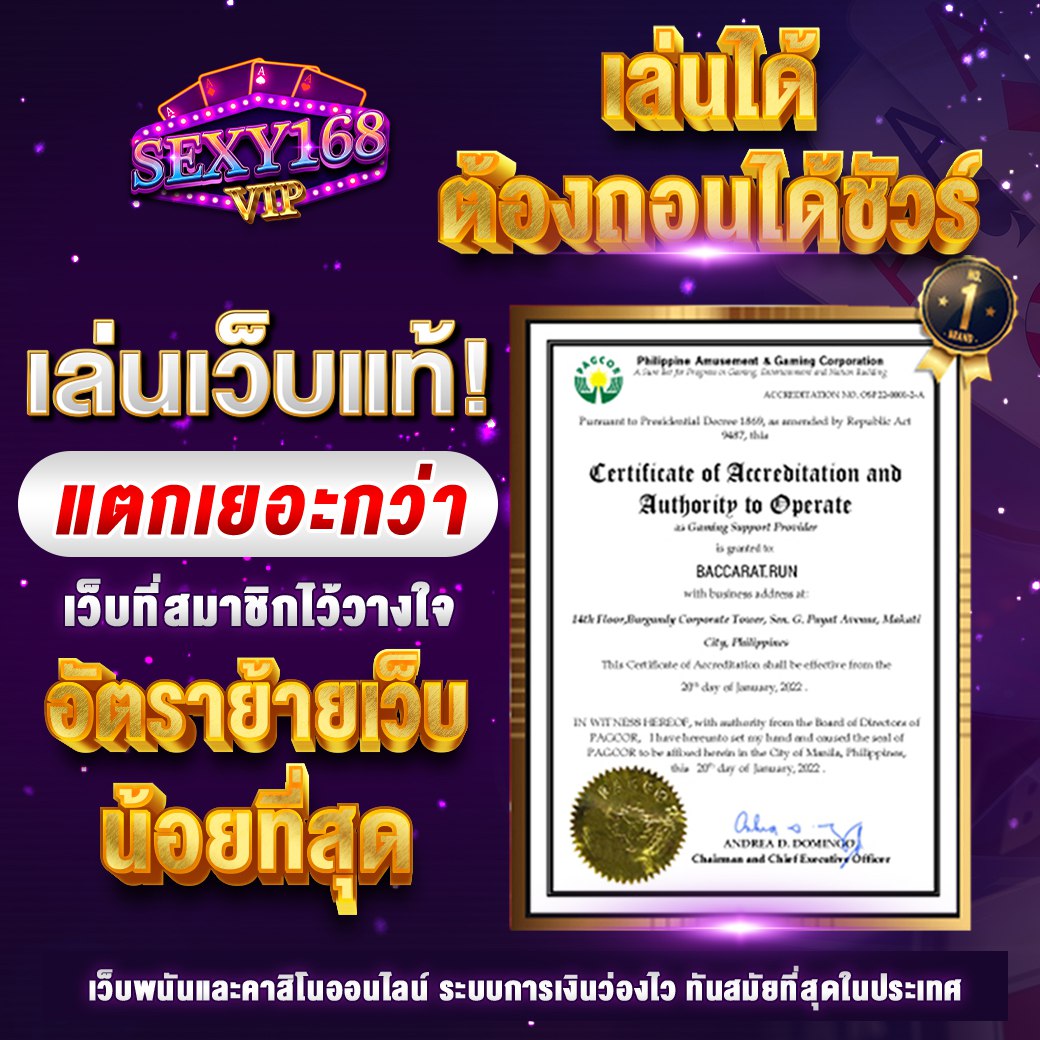



 ดูหนังx เว็บหนังอาร์คลิปมาแรงจำต้อง
ดูหนังx เว็บหนังอาร์คลิปมาแรงจำต้อง  การเลือกเว็บหนังเอ็กซ์69 หรือเลือกหนังเอวีดูเหมือนกับการเลือกคบคน ยิ่งเจอะกันง่ายก็ยิ่งต้องเลือกให้ดี หากอยากได้เขามาเป็นคู่ชีวิตคนก็จะต้องพิเคราะห์จากปัจจัยหลายๆอย่าง ไม่ใช่แค่รูปลักษณ์ภายนอกหรือการเสวนาเพียงแค่ไม่กี่ครั้ง เป็นต้นว่า การยอมรับในสิ่งที่ท่านเป็น พวกเราจะเข้าดวงใจในตัวตนที่ของท่านนั้นเป็นและไม่พากเพียรแปลงท่าน แต่พวกเรามักจะทำให้ท่านมีความรู้สึกว่าพวกเรารับในสิ่งที่ท่านเป็นไปได้ รวมทั้งทำให้ท่านนั้นมีความรู้สึกว่าในตอนที่ท่านได้ดูหนังx เว็บไซต์ jubyet69หนัง69 ของเราแล้วจะทำให้ท่านมีความสุขแบบไม่ต้องมาร้องขอเลยล่ะจ้ะ
การเลือกเว็บหนังเอ็กซ์69 หรือเลือกหนังเอวีดูเหมือนกับการเลือกคบคน ยิ่งเจอะกันง่ายก็ยิ่งต้องเลือกให้ดี หากอยากได้เขามาเป็นคู่ชีวิตคนก็จะต้องพิเคราะห์จากปัจจัยหลายๆอย่าง ไม่ใช่แค่รูปลักษณ์ภายนอกหรือการเสวนาเพียงแค่ไม่กี่ครั้ง เป็นต้นว่า การยอมรับในสิ่งที่ท่านเป็น พวกเราจะเข้าดวงใจในตัวตนที่ของท่านนั้นเป็นและไม่พากเพียรแปลงท่าน แต่พวกเรามักจะทำให้ท่านมีความรู้สึกว่าพวกเรารับในสิ่งที่ท่านเป็นไปได้ รวมทั้งทำให้ท่านนั้นมีความรู้สึกว่าในตอนที่ท่านได้ดูหนังx เว็บไซต์ jubyet69หนัง69 ของเราแล้วจะทำให้ท่านมีความสุขแบบไม่ต้องมาร้องขอเลยล่ะจ้ะ


 ดูหนังx หนัง 18 ฟรี หนังโป๊69 หนัง69 กับเรา หนัง 18 ฟรี ไม่ต้องวิตกกังวล เพราะว่าเราจัดเตรียมทุกๆอย่างไว้ให้ทุกท่านเป็นที่เป็นระเบียบแล้ว วันนี้เราจะมาบอกแบบอย่างคร่าวๆคนไหนกันแน่ใคร่รู้เพิ่มสามารถไปพบดูต่อได้เว็บไซต์ของพวกเราได้เลยจ้า
ดูหนังx หนัง 18 ฟรี หนังโป๊69 หนัง69 กับเรา หนัง 18 ฟรี ไม่ต้องวิตกกังวล เพราะว่าเราจัดเตรียมทุกๆอย่างไว้ให้ทุกท่านเป็นที่เป็นระเบียบแล้ว วันนี้เราจะมาบอกแบบอย่างคร่าวๆคนไหนกันแน่ใคร่รู้เพิ่มสามารถไปพบดูต่อได้เว็บไซต์ของพวกเราได้เลยจ้า
.png) ม.ราชภัฏ รู้จักกับ วิทยาลัยโลจิสติกส์ รวมทั้งซัพพลายศาสนาเชน (MBA) ม.ราชภัฏสวนสุนันทา
ม.ราชภัฏ รู้จักกับ วิทยาลัยโลจิสติกส์ รวมทั้งซัพพลายศาสนาเชน (MBA) ม.ราชภัฏสวนสุนันทา โดยยิ่งไปกว่านั้น MBA สาขาวิชาการจัดการโลจิสติกส์ รวมทั้งซัพพลายศาสนาเชน เชิงที่มีความสำคัญในการรบสากล ในระดับปริญญาของตรงนี้นั้น มีการสอนในวันอาทิตย์เพียงแค่นั้น ที่สามารถเรียนหลักสูตร 1 ปีครึ่ง สวนสุนันทา โดยแบ่งออก เป็น 2 รูปแบบให้ท่านได้สนใจกันดังเช่นว่า
โดยยิ่งไปกว่านั้น MBA สาขาวิชาการจัดการโลจิสติกส์ รวมทั้งซัพพลายศาสนาเชน เชิงที่มีความสำคัญในการรบสากล ในระดับปริญญาของตรงนี้นั้น มีการสอนในวันอาทิตย์เพียงแค่นั้น ที่สามารถเรียนหลักสูตร 1 ปีครึ่ง สวนสุนันทา โดยแบ่งออก เป็น 2 รูปแบบให้ท่านได้สนใจกันดังเช่นว่า ก็เลยทำให้ประเทศไทยของพวกเรานั้น เป็นอีกหนึ่งสาระสำคัญที่กำลังต้องการ ทางด้านธุรกิจขนส่ง ถือได้ว่าอันที่เป็นต่อเป็นอย่างยิ่ง เมื่อเทียบกับประเทศอื่นๆในบริเวณเพื่อนบ้านพวกเรา ด้วยเหตุดังกล่าว การดำเนินกิจการต่างๆหรือธุรกิจที่เกี่ยวเนื่องกับการขนส่งต่างๆทั้งทางอากาศทางเรือ และบนบกก็มีการส่งผลต่อเศรษฐกิจรวมทั้งการพัฒนาประเทศเป็นอันมาก ด้วยเช่นเดียวกัน
ก็เลยทำให้ประเทศไทยของพวกเรานั้น เป็นอีกหนึ่งสาระสำคัญที่กำลังต้องการ ทางด้านธุรกิจขนส่ง ถือได้ว่าอันที่เป็นต่อเป็นอย่างยิ่ง เมื่อเทียบกับประเทศอื่นๆในบริเวณเพื่อนบ้านพวกเรา ด้วยเหตุดังกล่าว การดำเนินกิจการต่างๆหรือธุรกิจที่เกี่ยวเนื่องกับการขนส่งต่างๆทั้งทางอากาศทางเรือ และบนบกก็มีการส่งผลต่อเศรษฐกิจรวมทั้งการพัฒนาประเทศเป็นอันมาก ด้วยเช่นเดียวกัน …
… มาดูหนังออนไลน์ที่ madoohd.com EP.1
มาดูหนังออนไลน์ที่ madoohd.com EP.1 แต่ว่าก็นั่นแหละนะครับ การดูหนังออนไลน์ก็ไม่ใช่เรื่องห่วยเลยนะครับ ในทางกลับกัน มันช่วยให้ผมอดออมค่าใช้จ่ายในการดูหนังไปได้ไม่น้อยเลยทีเดียวผมไม่ต้องทานข้าวนอกบ้าน ไม่ต้องซื้อน้ำหรือป็อปคอร์น ไม่ต้องเสียค่าตั๋วหนัง แถมไม่เสียเวล่ำเวลาเดินทางด้วยครับผม การที่ผมมาดูหนังที่ madoohd.com ผมได้ดูหนังทุกชนิด จะหนังชนโรง หนังใหม่ หนังเก่า หรือหนังอะไร
แต่ว่าก็นั่นแหละนะครับ การดูหนังออนไลน์ก็ไม่ใช่เรื่องห่วยเลยนะครับ ในทางกลับกัน มันช่วยให้ผมอดออมค่าใช้จ่ายในการดูหนังไปได้ไม่น้อยเลยทีเดียวผมไม่ต้องทานข้าวนอกบ้าน ไม่ต้องซื้อน้ำหรือป็อปคอร์น ไม่ต้องเสียค่าตั๋วหนัง แถมไม่เสียเวล่ำเวลาเดินทางด้วยครับผม การที่ผมมาดูหนังที่ madoohd.com ผมได้ดูหนังทุกชนิด จะหนังชนโรง หนังใหม่ หนังเก่า หรือหนังอะไร





 เล่นบาคาร่ายังไงให้ปัง บาคาร่า168 เกมไพ่คลาสสิกต้นตำหรับของการเดิมพันออนไลน์!
เล่นบาคาร่ายังไงให้ปัง บาคาร่า168 เกมไพ่คลาสสิกต้นตำหรับของการเดิมพันออนไลน์!

 …
… ถ้าหากพูดถึงเว็บ สล็อตxo ที่มาแรงเวลานี้ คงจะหนีไม่พ้น Slotxo จริงๆตัวตึงแห่งวงการลงทุนออนไลน์ ด้วยระบบที่ให้ความมากมาย สล็อต24 โปรโมชั่นสุดจี๊ด เว็บไซต์ตรงของจริงที่ใครๆต่างใฝ่ฝัน ด้วยใบ Certificate แล้วก็ License แท้ ของ สล็อต24 ระดับสากลเยอะแยะ ไม่ว่าจะเป็น ใบรับรองมาตรฐาน สล็อตออนไลน์ สล็อตxo สล็อต24 ที่รับรองเรื่องของจังหวะได้เสียของเกมส์โดยไม่มีการปรับลดเปอร์เซ็นต์หรือล็อกยูสเซอร์ แล้วก็ใบสุทธิความปลอดภัยของระบบฝากถอนจากลาสเวกัส และยังรวมไปถึงใบรับรองมาตรฐานระบบของเว็บไซต์ ไม่ว่าจะเป็นระบบฝากถอนอัตโนมัติ โปรโมชั่นที่ส่งตรงจากศูนย์หลักที่สหรัฐฯ ทุกสิ่งที่กล่าวมาใช้เป็นเครื่องการันตีอย่างยอดเยี่ยมว่า สล็อตxo โคตรชั่วร้าย โคตรอันตราย เว็บไซต์ใหญ่ที่ใครๆก็อยากทดลอง มาเจิมกันเลยที่ slotxo แรง
ถ้าหากพูดถึงเว็บ สล็อตxo ที่มาแรงเวลานี้ คงจะหนีไม่พ้น Slotxo จริงๆตัวตึงแห่งวงการลงทุนออนไลน์ ด้วยระบบที่ให้ความมากมาย สล็อต24 โปรโมชั่นสุดจี๊ด เว็บไซต์ตรงของจริงที่ใครๆต่างใฝ่ฝัน ด้วยใบ Certificate แล้วก็ License แท้ ของ สล็อต24 ระดับสากลเยอะแยะ ไม่ว่าจะเป็น ใบรับรองมาตรฐาน สล็อตออนไลน์ สล็อตxo สล็อต24 ที่รับรองเรื่องของจังหวะได้เสียของเกมส์โดยไม่มีการปรับลดเปอร์เซ็นต์หรือล็อกยูสเซอร์ แล้วก็ใบสุทธิความปลอดภัยของระบบฝากถอนจากลาสเวกัส และยังรวมไปถึงใบรับรองมาตรฐานระบบของเว็บไซต์ ไม่ว่าจะเป็นระบบฝากถอนอัตโนมัติ โปรโมชั่นที่ส่งตรงจากศูนย์หลักที่สหรัฐฯ ทุกสิ่งที่กล่าวมาใช้เป็นเครื่องการันตีอย่างยอดเยี่ยมว่า สล็อตxo โคตรชั่วร้าย โคตรอันตราย เว็บไซต์ใหญ่ที่ใครๆก็อยากทดลอง มาเจิมกันเลยที่ slotxo แรง
 4. ไม่ต้องจำสูตร pg slot เว็บตรงมากมายก่ายกอง หาสไตล์ให้พบก็พอ
4. ไม่ต้องจำสูตร pg slot เว็บตรงมากมายก่ายกอง หาสไตล์ให้พบก็พอ สล็อตpgแท้ สล็อตเว็บตรง www.pgslot-1st.com 28 มิถุนา 2023 Willy สมัครเลย
สล็อตpgแท้ สล็อตเว็บตรง www.pgslot-1st.com 28 มิถุนา 2023 Willy สมัครเลย 
 การที่พวกเราเคลมตนเองว่าเป็นเว็บไซต์ ดูหนังผ่านอินเตอร์เน็ต หนังใหม่ ดูหนังผ่านเน็ต 2023 ที่เยี่ยมที่สุดในปีนี้ มันก็ไม่แปลก เพราะนอกจากระบบหน้าเว็บของเราจะสะดวกและก็ตามมาตรฐานสากลมากมายๆแล้ว พวกเรายังมีการจัดแจงระบบการดูหนังให้ทุกคนได้ดูหนังที่อยากดูฟรีๆดูหนังผ่านเน็ต หนังใหม่ ดูหนังผ่านเน็ต 2023 กับเรา ทุกคนจะราวกับได้ดูหนังในแพลทฟอร์มมีชื่อเยอะแยะ ไม่ว่าจะเป็น Netflix Disney hotstar และก็อื่นๆด้วยเหตุว่าพวกเรา เว็บ ดูหนังผ่านเน็ต หนังใหม่ ดูหนังผ่านเน็ต 2023 Movie2k อยากที่จะให้ทุกท่านได้ดูหนังออนไลน์กันอย่างจุใจแล้วก็คุ้มที่จะดูที่สุด และทั้งปวงที่บอกมา มันคือของจริง ภาพคม ชัด ลึก เสียงเป๊ะ full HD ทุกเรื่องทุกตอน แถมเว็บ ดูหนังออนไลน์ หนังใหม่ ดูหนังออนไลน์ 2023 ชองพวกเรา ยังอัพเดทหนังไวมากที่สุดในประเทศไทยอย่างแน่แท้ เพราะเหตุว่าเราจัดหนักจัดเต็มอีกทั้งหนังโรง หนังชนโรงเราก็มี บางโอกาสมีหนังที่ยังไม่เข้าโรงที่ประเทศไทยด้วย สุดจัดสุดจริง ดูหนังผ่านอินเตอร์เน็ต หนังใหม่ ดูหนังผ่านเน็ต 2023 กับพวกเรา movie2k จะทำให้ทุกท่าน ได้อัพเดทหนังก่อนคนใด ไม่ต้องมานั่ตระหนี่ลัวโดนสปอย เพราะเหตุว่าเรา movie2k มีหนังให้ทุกท่านได้มองกันฟรีๆก่อนคนใดกัน
การที่พวกเราเคลมตนเองว่าเป็นเว็บไซต์ ดูหนังผ่านอินเตอร์เน็ต หนังใหม่ ดูหนังผ่านเน็ต 2023 ที่เยี่ยมที่สุดในปีนี้ มันก็ไม่แปลก เพราะนอกจากระบบหน้าเว็บของเราจะสะดวกและก็ตามมาตรฐานสากลมากมายๆแล้ว พวกเรายังมีการจัดแจงระบบการดูหนังให้ทุกคนได้ดูหนังที่อยากดูฟรีๆดูหนังผ่านเน็ต หนังใหม่ ดูหนังผ่านเน็ต 2023 กับเรา ทุกคนจะราวกับได้ดูหนังในแพลทฟอร์มมีชื่อเยอะแยะ ไม่ว่าจะเป็น Netflix Disney hotstar และก็อื่นๆด้วยเหตุว่าพวกเรา เว็บ ดูหนังผ่านเน็ต หนังใหม่ ดูหนังผ่านเน็ต 2023 Movie2k อยากที่จะให้ทุกท่านได้ดูหนังออนไลน์กันอย่างจุใจแล้วก็คุ้มที่จะดูที่สุด และทั้งปวงที่บอกมา มันคือของจริง ภาพคม ชัด ลึก เสียงเป๊ะ full HD ทุกเรื่องทุกตอน แถมเว็บ ดูหนังออนไลน์ หนังใหม่ ดูหนังออนไลน์ 2023 ชองพวกเรา ยังอัพเดทหนังไวมากที่สุดในประเทศไทยอย่างแน่แท้ เพราะเหตุว่าเราจัดหนักจัดเต็มอีกทั้งหนังโรง หนังชนโรงเราก็มี บางโอกาสมีหนังที่ยังไม่เข้าโรงที่ประเทศไทยด้วย สุดจัดสุดจริง ดูหนังผ่านอินเตอร์เน็ต หนังใหม่ ดูหนังผ่านเน็ต 2023 กับพวกเรา movie2k จะทำให้ทุกท่าน ได้อัพเดทหนังก่อนคนใด ไม่ต้องมานั่ตระหนี่ลัวโดนสปอย เพราะเหตุว่าเรา movie2k มีหนังให้ทุกท่านได้มองกันฟรีๆก่อนคนใดกัน  แม้ทุกท่านเคยคิดว่า ดูหนังออนไลน์ หนังใหม่ ดูหนังออนไลน์ 2023 มองไหนก็แบบเดียวกัน คุณกำลังคิดผิดอย่างร้ายแรง มาดูกันเลยดีกว่าว่ามันเว็บไซต์ ดูหนังผ่านอินเตอร์เน็ต หนังใหม่ ดูหนังออนไลน์ 2023 มันต่างกันยังไงบ้าง?
แม้ทุกท่านเคยคิดว่า ดูหนังออนไลน์ หนังใหม่ ดูหนังออนไลน์ 2023 มองไหนก็แบบเดียวกัน คุณกำลังคิดผิดอย่างร้ายแรง มาดูกันเลยดีกว่าว่ามันเว็บไซต์ ดูหนังผ่านอินเตอร์เน็ต หนังใหม่ ดูหนังออนไลน์ 2023 มันต่างกันยังไงบ้าง?
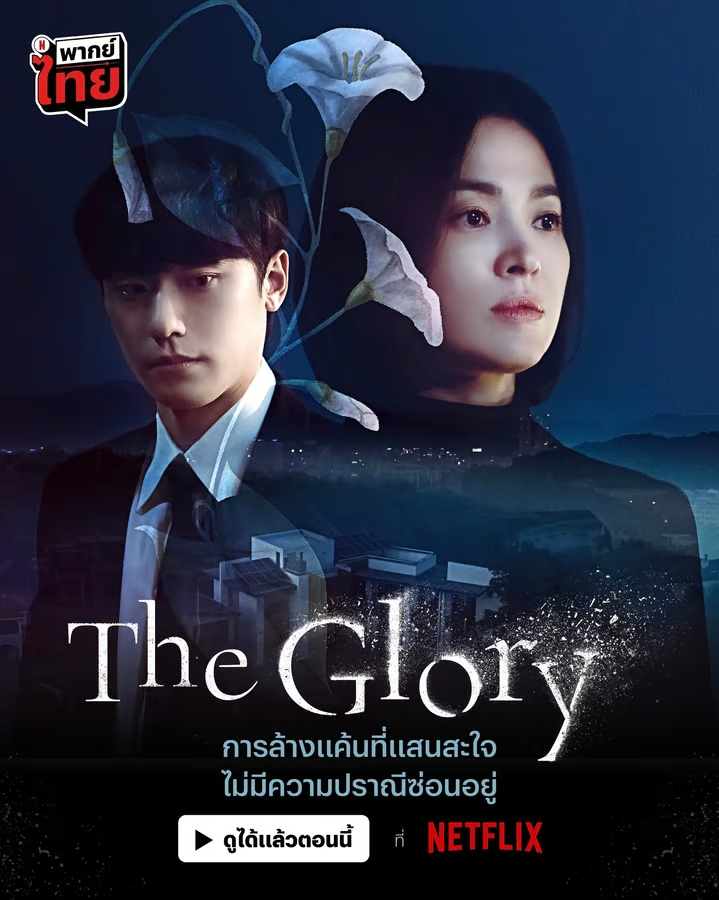 …
… ดูหนังผ่านอินเตอร์เน็ตหนังออนไลน์ สบายกว่าดูหนังโรงภาพยนต์หรือดูหนังในโทรทัศน์ยังไงบ้าง? มันเกิดเรื่องที่แน่ๆว่า มันสบายกว่าอยู่แล้ว ที่พวกเราสามารถดูหนังผ่านอินเตอร์เน็ต ที่แห่งไหนก็ได้จริงไหม? เวลาใดก็ได้ที่เราต้องการจะดูหนัง หนังออนไลน์ มันก็ตามใจพวกเราอย่างแน่แท้ ว่างๆก็ดู ยุ่งก็ค่อยกลับมาดูใหม่ เซฟในเวลาที่ดูปัจจุบันไว้ แถมการ หนังออนไลน์ ไปกับพวกเรา moviekece ทั้งหมดทั้งปวงนั้นล้วนเป็นหนังดีหนังใหม่ปัจจุบันมีคุณภาพที่แจ่มกระจ่างแจ่มเจ๋ง HD เสียงชัด 100% ดูได้ดูดีแบบงี้เต็มระบบ ชื่นชอบวัยรุ่นทุกคนอย่างไม่ต้องสงสัยเลยจ๊ะ และก็ในวันนี้มันถึงเวลาแล้วที่พวกเรา ดูหนังออนไลน์ จะมานำเสนอเว็บ หนังออนไลน์ ของเรา moviekece ที่มีให้ทุกท่านได้มองกันอย่างจุใจเต็ฒอิ่ม ทั้งยังฟีเจอร์สุดล้ำสมัย ที่มันช่างสะดวกที่สุด และก็ หนังออนไลน์ ที่เยี่ยมที่สุด หนังดีเด่นหนังใหม่ล่าสุด คุณภาพคับแก้วแบบเต็มแม็กซ์ ทุกคนสามารถ
ดูหนังผ่านอินเตอร์เน็ตหนังออนไลน์ สบายกว่าดูหนังโรงภาพยนต์หรือดูหนังในโทรทัศน์ยังไงบ้าง? มันเกิดเรื่องที่แน่ๆว่า มันสบายกว่าอยู่แล้ว ที่พวกเราสามารถดูหนังผ่านอินเตอร์เน็ต ที่แห่งไหนก็ได้จริงไหม? เวลาใดก็ได้ที่เราต้องการจะดูหนัง หนังออนไลน์ มันก็ตามใจพวกเราอย่างแน่แท้ ว่างๆก็ดู ยุ่งก็ค่อยกลับมาดูใหม่ เซฟในเวลาที่ดูปัจจุบันไว้ แถมการ หนังออนไลน์ ไปกับพวกเรา moviekece ทั้งหมดทั้งปวงนั้นล้วนเป็นหนังดีหนังใหม่ปัจจุบันมีคุณภาพที่แจ่มกระจ่างแจ่มเจ๋ง HD เสียงชัด 100% ดูได้ดูดีแบบงี้เต็มระบบ ชื่นชอบวัยรุ่นทุกคนอย่างไม่ต้องสงสัยเลยจ๊ะ และก็ในวันนี้มันถึงเวลาแล้วที่พวกเรา ดูหนังออนไลน์ จะมานำเสนอเว็บ หนังออนไลน์ ของเรา moviekece ที่มีให้ทุกท่านได้มองกันอย่างจุใจเต็ฒอิ่ม ทั้งยังฟีเจอร์สุดล้ำสมัย ที่มันช่างสะดวกที่สุด และก็ หนังออนไลน์ ที่เยี่ยมที่สุด หนังดีเด่นหนังใหม่ล่าสุด คุณภาพคับแก้วแบบเต็มแม็กซ์ ทุกคนสามารถ 


 pg168 สล็อตpgแท้ เชิญชวนคุณมาวางแผนการเล่นสล็อตออนไลน์ เล่นยังไงให้แปลงเป็นเศรษฐีคนใหม่!
pg168 สล็อตpgแท้ เชิญชวนคุณมาวางแผนการเล่นสล็อตออนไลน์ เล่นยังไงให้แปลงเป็นเศรษฐีคนใหม่! •
• 
 ขอขอบพระคุณเว็บ
ขอขอบพระคุณเว็บ 


 แนวทางการสมัครสมาชิกเว็บไซต์สล็อตเพื่อเล่นทดลองเล่นสล็อต PG เว็บตรง ที่สมัครง่าย ไม่เสียค่าใช้จ่ายค่าใช้จ่ายสำหรับการสมัครแม้กระทั้งบาทเดียว
แนวทางการสมัครสมาชิกเว็บไซต์สล็อตเพื่อเล่นทดลองเล่นสล็อต PG เว็บตรง ที่สมัครง่าย ไม่เสียค่าใช้จ่ายค่าใช้จ่ายสำหรับการสมัครแม้กระทั้งบาทเดียว ขอขอบคุณอ้างอิง
ขอขอบคุณอ้างอิง 

 เปิดตัวแล้ว
เปิดตัวแล้ว  เว็บไซต์สล็อตเว็บตรง เปิดให้บริการครบวงจร
เว็บไซต์สล็อตเว็บตรง เปิดให้บริการครบวงจร …
… ระบบ ทดสอบเล่นสล็อต PG เว็บไซต์ตรง เปิดให้บริการแล้วในประเทศไทย!
ระบบ ทดสอบเล่นสล็อต PG เว็บไซต์ตรง เปิดให้บริการแล้วในประเทศไทย! …
… pg slot เว็บไซต์ตรง สล็อตเล่นฟรีพลาดมิได้ สล็อต PG เว็บตรง แตกหนัก
pg slot เว็บไซต์ตรง สล็อตเล่นฟรีพลาดมิได้ สล็อต PG เว็บตรง แตกหนัก เว็บสล็อตเว็บไซต์ตรงรูปแบบใหม่ที่จำเป็นต้องลอง
เว็บสล็อตเว็บไซต์ตรงรูปแบบใหม่ที่จำเป็นต้องลอง
 pg slot pg slot เว็บตรง สล็อตมาใหม่ไม่สมควรพลาด leetgamers
pg slot pg slot เว็บตรง สล็อตมาใหม่ไม่สมควรพลาด leetgamers ปากทางเข้า pg pg slot บริการเว็บเกมสล็อตที่ไม่ควรพลาด
ปากทางเข้า pg pg slot บริการเว็บเกมสล็อตที่ไม่ควรพลาด
 …
… แทงหวยสด มือใหม่ก็แทงได้ร่ำรวยจริง game.no1huay
แทงหวยสด มือใหม่ก็แทงได้ร่ำรวยจริง game.no1huay  เพราะอะไรนักแทงหวย แทงหวยสด ถึงถูกใจไปแทงหวยกับเว็บสลากกินแบ่งออนไลน์ เพราะเหตุว่าเว็บลอตเตอรี่ออนไลน์เว็บไซต์นี้ไม่ได้ให้บริการเพียงแค่สลากกินแบ่งในประเทศแค่นั้น แต่ว่ายังให้บริการลอตเตอรี่ต่างแดนอีกเพียบเลย ไม่ว่าจะเป็นสลากกินแบ่งลาว ลอตเตอรี่เวียดนาม สลากกินแบ่งมาเลย์ หรือแม้กระทั้งหวยหุ้นทางเว็บไซต์ลอตเตอรี่ออนไลน์ของพวกเรายังมีให้บริการ รวมทั้งนักการพนันสามารถเลือกเล่นได้ตามสิ่งที่จำเป็น จึงทำให้นักเสี่ยงโชคพอใจและก็เข้ามาใช้บริการแทงหวยออนไลน์กับเว็บไซต์แห่งนี้กันมากขึ้น
เพราะอะไรนักแทงหวย แทงหวยสด ถึงถูกใจไปแทงหวยกับเว็บสลากกินแบ่งออนไลน์ เพราะเหตุว่าเว็บลอตเตอรี่ออนไลน์เว็บไซต์นี้ไม่ได้ให้บริการเพียงแค่สลากกินแบ่งในประเทศแค่นั้น แต่ว่ายังให้บริการลอตเตอรี่ต่างแดนอีกเพียบเลย ไม่ว่าจะเป็นสลากกินแบ่งลาว ลอตเตอรี่เวียดนาม สลากกินแบ่งมาเลย์ หรือแม้กระทั้งหวยหุ้นทางเว็บไซต์ลอตเตอรี่ออนไลน์ของพวกเรายังมีให้บริการ รวมทั้งนักการพนันสามารถเลือกเล่นได้ตามสิ่งที่จำเป็น จึงทำให้นักเสี่ยงโชคพอใจและก็เข้ามาใช้บริการแทงหวยออนไลน์กับเว็บไซต์แห่งนี้กันมากขึ้น
 …
… วิธีเล่นสล็อตครั้งแรก รู้ก่อน รวยก่อน ไม่ต้องขอคืนดีดวง
วิธีเล่นสล็อตครั้งแรก รู้ก่อน รวยก่อน ไม่ต้องขอคืนดีดวง แนวทางเล่นสล็อตให้แตก อัปเดตถึงที่กะไว้เว็บไซต์ PGSLOT ทุกๆวัน
แนวทางเล่นสล็อตให้แตก อัปเดตถึงที่กะไว้เว็บไซต์ PGSLOT ทุกๆวัน แจก แนวทางเล่นสล็อต pg ให้ แตก สล็อต ฉบับคนเล่นจริง 2022
แจก แนวทางเล่นสล็อต pg ให้ แตก สล็อต ฉบับคนเล่นจริง 2022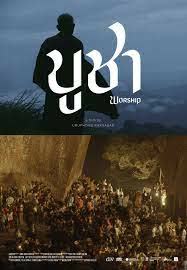


 …
… ดูหนังใหม่ ดูหนัง 2566 ดูหนังผ่านอินเตอร์เน็ต 2023 หนังออนไลน์ 2566 ฟรี! ได้แล้วตรงนี้ movieskub สุดยอดเว็บดูหนังออนไลน์เปิดใหม่ ที่ดูได้ทุกเพศทุกวัย ดูตอนไหนก็สนุก ไม่มีกระตุก เสียงดี ประสิทธิภาพหนังโรง ดูหนังใหม่ ดูหนังออนไลน์ 2023 หนังออนไลน์ 2566 ชัดเจน ภาพ HD หนังใหม่ หนังมาแรง หนังสนุก หนังภาคต่อ หนังซับไทย พากษ์ไทย มีให้ทุกคนได้เลือกดูกันอย่างเมามันส์ ทุกที่ที่ต้องการ ต้องการมองตอนไหนก็จัดไปเลยจ๊า ดูหนังใหม่ ดูหนังออนไลน์ 2023 หนังออนไลน์ 2566 movieskub จัดให้แบบจุกๆด้วยระบบการดูหนังที่ใหม่ล่าสุด ส่งตรงจากอเมริกา บริษัทคู่ต่อสู้ Netflix เลยจ้ะจะบอกให้ แต่ที่ต่างคือ ประสิทธิภาพและ ดูหนังใหม่ ดูหนังผ่านอินเตอร์เน็ต 2023 หนังออนไลน์ 2566 กับพวกเรา movieskub มองฟรี 1 วัน!
ดูหนังใหม่ ดูหนัง 2566 ดูหนังผ่านอินเตอร์เน็ต 2023 หนังออนไลน์ 2566 ฟรี! ได้แล้วตรงนี้ movieskub สุดยอดเว็บดูหนังออนไลน์เปิดใหม่ ที่ดูได้ทุกเพศทุกวัย ดูตอนไหนก็สนุก ไม่มีกระตุก เสียงดี ประสิทธิภาพหนังโรง ดูหนังใหม่ ดูหนังออนไลน์ 2023 หนังออนไลน์ 2566 ชัดเจน ภาพ HD หนังใหม่ หนังมาแรง หนังสนุก หนังภาคต่อ หนังซับไทย พากษ์ไทย มีให้ทุกคนได้เลือกดูกันอย่างเมามันส์ ทุกที่ที่ต้องการ ต้องการมองตอนไหนก็จัดไปเลยจ๊า ดูหนังใหม่ ดูหนังออนไลน์ 2023 หนังออนไลน์ 2566 movieskub จัดให้แบบจุกๆด้วยระบบการดูหนังที่ใหม่ล่าสุด ส่งตรงจากอเมริกา บริษัทคู่ต่อสู้ Netflix เลยจ้ะจะบอกให้ แต่ที่ต่างคือ ประสิทธิภาพและ ดูหนังใหม่ ดูหนังผ่านอินเตอร์เน็ต 2023 หนังออนไลน์ 2566 กับพวกเรา movieskub มองฟรี 1 วัน!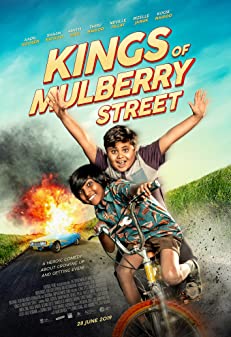 …
… ขอขอบคุณมากอ้างอิง
ขอขอบคุณมากอ้างอิง 

 สล็อต44 พวกเราเป็นเว็บไซต์
สล็อต44 พวกเราเป็นเว็บไซต์  บริการสล็อตออนไลน์ เว็บตรงไม่ผ่านเอเย่นต์เปิดใหม่ฝากถอนโอนเงินไว ได้เงินใช้รวดเร็ว
บริการสล็อตออนไลน์ เว็บตรงไม่ผ่านเอเย่นต์เปิดใหม่ฝากถอนโอนเงินไว ได้เงินใช้รวดเร็ว
 …
… ลงทะเบียนเป็นสมาชิกรับโบนัส ได้ในทันทีภายหลังสมัคร
ลงทะเบียนเป็นสมาชิกรับโบนัส ได้ในทันทีภายหลังสมัคร สล็อต 888 รวมค่ายรวมเว็บสล็อต 888ทางเข้า JINDA888 สล็อต pg ที่ดีที่สุด https://www.Jinda888.vip/ 18 พฤษภาคม 2023 Angela เกมสล็อต888 ไทยสล็อต 888 Top 6
สล็อต 888 รวมค่ายรวมเว็บสล็อต 888ทางเข้า JINDA888 สล็อต pg ที่ดีที่สุด https://www.Jinda888.vip/ 18 พฤษภาคม 2023 Angela เกมสล็อต888 ไทยสล็อต 888 Top 6

 หนัง69 คลิปเด็ดห้ามพลาด พร้อมให้ทุกท่านได้คลิ๊กดูแล้วจ้ะ
หนัง69 คลิปเด็ดห้ามพลาด พร้อมให้ทุกท่านได้คลิ๊กดูแล้วจ้ะ
 m.jinda55 slot เครดิตฟรี เว็บตรง มั่นคง ไม่เป็นอันตราย 100 มาลองสมัครเป็นสมาชิกแล้วไม่ต้องกังวลอะไรเลย ที่จะเพิ่มหนทางได้กำไรได้เป็นอย่างดี แล้วอยากชี้นำให้ทดลองเข้ามาเรียนถึงทางที่มองหาเว็บตรงที่มีความปลอดภัย,
m.jinda55 slot เครดิตฟรี เว็บตรง มั่นคง ไม่เป็นอันตราย 100 มาลองสมัครเป็นสมาชิกแล้วไม่ต้องกังวลอะไรเลย ที่จะเพิ่มหนทางได้กำไรได้เป็นอย่างดี แล้วอยากชี้นำให้ทดลองเข้ามาเรียนถึงทางที่มองหาเว็บตรงที่มีความปลอดภัย,  เล่นสล็อตเว็บไซต์ตรงได้เงินจริง มือใหม่ ปั๊มเงินได้ไม่ยาก สล็อตออนไลน์
เล่นสล็อตเว็บไซต์ตรงได้เงินจริง มือใหม่ ปั๊มเงินได้ไม่ยาก สล็อตออนไลน์

 …
…



 สล็อต55 สล็อตเว็บตรง888 บริการเว็บสล็อตออนไลน์ที่ยอดเยี่ยมในปีนี้ เรามีจุดเด่นในหลายด้านที่มีความต่าง จึงทำให้เว็บไซต์สล็อตออนไลน์ของพวกเราเป็นเว็บไซต์ยอดนิยมอย่างมาก อีกทั้งในเรื่องเกี่ยวกับการนำเข้าเกมการเดิมพันสล็อตออนไลน์ โปรโมชั่นสุดพิเศษที่เตรียมพร้อมไว้ให้กับสมาชิก ทั้งยังบริการที่ช่วยอำนวยความสะดวกให้กับนักพนัน รวมไปถึงเกมสล็อตออนไลน์แตกหนัก ที่เราเตรียมมาบรรจุไว้ให้กับนักเดิมพัน ถึงแม้เราจะเป็นเว็บสล็อตออนไลน์สมาชิกใหม่ที่เปิดให้บริการ แม้กระนั้นในเรื่องของคุณภาพและก็โปรโมชั่นเราจัดหนักจัดเต็ม 55slot ทำให้เว็บของเราเป็นเว็บที่กำลังเริ่มจะมีกระแสนิยม มีนักเดิมพันมากมายต่างหลั่งไหลลงทะเบียนสมัครสมาชิกเข้ามาใช้บริการ ผ่านทางเว็บของเราเยอะๆ
สล็อต55 สล็อตเว็บตรง888 บริการเว็บสล็อตออนไลน์ที่ยอดเยี่ยมในปีนี้ เรามีจุดเด่นในหลายด้านที่มีความต่าง จึงทำให้เว็บไซต์สล็อตออนไลน์ของพวกเราเป็นเว็บไซต์ยอดนิยมอย่างมาก อีกทั้งในเรื่องเกี่ยวกับการนำเข้าเกมการเดิมพันสล็อตออนไลน์ โปรโมชั่นสุดพิเศษที่เตรียมพร้อมไว้ให้กับสมาชิก ทั้งยังบริการที่ช่วยอำนวยความสะดวกให้กับนักพนัน รวมไปถึงเกมสล็อตออนไลน์แตกหนัก ที่เราเตรียมมาบรรจุไว้ให้กับนักเดิมพัน ถึงแม้เราจะเป็นเว็บสล็อตออนไลน์สมาชิกใหม่ที่เปิดให้บริการ แม้กระนั้นในเรื่องของคุณภาพและก็โปรโมชั่นเราจัดหนักจัดเต็ม 55slot ทำให้เว็บของเราเป็นเว็บที่กำลังเริ่มจะมีกระแสนิยม มีนักเดิมพันมากมายต่างหลั่งไหลลงทะเบียนสมัครสมาชิกเข้ามาใช้บริการ ผ่านทางเว็บของเราเยอะๆ

 …
… joker123.money สล็อตเว็บตรงสมาชิกใหม่มาแรง สล็อตเว็บตรงแท้ 100% ลองเลย!
joker123.money สล็อตเว็บตรงสมาชิกใหม่มาแรง สล็อตเว็บตรงแท้ 100% ลองเลย! joker123 สล็อตเว็บตรงน้องใหม่มาแรงที่สุดเวลานี้ สล็อตเว็บตรงแท้ 100% ที่คุณตามหา ถ้าหากคุณกำลังมองหาเว็บสล็อตออนไลน์เว็บไซต์ใหม่ๆอยู่ล่ะก็ มาเลยครับผม สล็อตเว็บไซต์ตรงน้องใหม่ไฟแรงแบบเราโจ๊กเกอร์123ยินดีต้อนรับเลยครับผม แม้ว่าจะเป็นเว็บน้องใหม่ แม้กระนั้นความเป็นสล็อตเว็บตรงคือสิ่งที่พวกเรายึดมั่นเสมอมา เราได้กระทำการขอใบรับรองจากค่ายเกมสล็อตออนไลน์ต่างๆเพื่อที่จะสามารถเปิดให้บริการได้อย่างแม่นยำและก็โปร่งใส ทุกๆการเล่นของคุณจึงควรปลอดภัยแบบสุดๆ
joker123 สล็อตเว็บตรงน้องใหม่มาแรงที่สุดเวลานี้ สล็อตเว็บตรงแท้ 100% ที่คุณตามหา ถ้าหากคุณกำลังมองหาเว็บสล็อตออนไลน์เว็บไซต์ใหม่ๆอยู่ล่ะก็ มาเลยครับผม สล็อตเว็บไซต์ตรงน้องใหม่ไฟแรงแบบเราโจ๊กเกอร์123ยินดีต้อนรับเลยครับผม แม้ว่าจะเป็นเว็บน้องใหม่ แม้กระนั้นความเป็นสล็อตเว็บตรงคือสิ่งที่พวกเรายึดมั่นเสมอมา เราได้กระทำการขอใบรับรองจากค่ายเกมสล็อตออนไลน์ต่างๆเพื่อที่จะสามารถเปิดให้บริการได้อย่างแม่นยำและก็โปร่งใส ทุกๆการเล่นของคุณจึงควรปลอดภัยแบบสุดๆ สมัครสมาชิกกับโจ๊กเกอร์123แบบง่ายๆGGEZ แน่ๆ 300% ขอรับ สมัครเลย!
สมัครสมาชิกกับโจ๊กเกอร์123แบบง่ายๆGGEZ แน่ๆ 300% ขอรับ สมัครเลย!

 • ฝากถอนไม่มีอย่างต่ำ
• ฝากถอนไม่มีอย่างต่ำ นี่เป็นเพียงแค่ส่วน หนึ่ง pg เว็บตรง ของจุดเด่นรวมทั้งจุดแข็งที่พวกเราได้เตรียมการ ให้กับนักพนันได้รับชม แน่ๆว่าเว็บไซต์แห่งนี้ยังมีข้อดีและก็คุณลักษณะเด่นอีกเยอะมากต้องการที่จะให้นักเดิมพันเข้ามาทดสอบเล่นด้วยตัวเอง รับประกันความคุ้มราคา ของโปรโมชั่นแล้วก็บริการที่ดินเว็บของพวกเราพร้อมจะมอบให้ ทางทีมงานจะคอยดูแล รวมทั้งแก้ปัญหาเมื่อกำเนิดกับนักเดิมพัน ที่ใช้บริการกับทางเว็บไซต์ของพวกเรา
นี่เป็นเพียงแค่ส่วน หนึ่ง pg เว็บตรง ของจุดเด่นรวมทั้งจุดแข็งที่พวกเราได้เตรียมการ ให้กับนักพนันได้รับชม แน่ๆว่าเว็บไซต์แห่งนี้ยังมีข้อดีและก็คุณลักษณะเด่นอีกเยอะมากต้องการที่จะให้นักเดิมพันเข้ามาทดสอบเล่นด้วยตัวเอง รับประกันความคุ้มราคา ของโปรโมชั่นแล้วก็บริการที่ดินเว็บของพวกเราพร้อมจะมอบให้ ทางทีมงานจะคอยดูแล รวมทั้งแก้ปัญหาเมื่อกำเนิดกับนักเดิมพัน ที่ใช้บริการกับทางเว็บไซต์ของพวกเรา
 …
… บาคาร่า บาคาร่า เกมการพนันในที่ได้รับความนิยมชั่วนิจนิรันดร์ ทำเงินอย่างใหญ่โต
บาคาร่า บาคาร่า เกมการพนันในที่ได้รับความนิยมชั่วนิจนิรันดร์ ทำเงินอย่างใหญ่โต สำหรับในประเด็นนี้ รับของมหาวิทยาลัยก็มีด้วยสิ่งเดียวกัน ที่มีการบอกปากต่อปากจากรุ่นสู่รุ่น โดยเรื่องที่น่าสนใจเป็น ในช่วงสอบจะมีการไหว้แม่ด้วย ดอกกุหลาบสีชมพู เพื่อเป็นอีกหนึ่งขวัญ และพลังใจที่ดีเพื่อที่อยากจะให้นักศึกษานั้นได้สอบผ่านกัน
สำหรับในประเด็นนี้ รับของมหาวิทยาลัยก็มีด้วยสิ่งเดียวกัน ที่มีการบอกปากต่อปากจากรุ่นสู่รุ่น โดยเรื่องที่น่าสนใจเป็น ในช่วงสอบจะมีการไหว้แม่ด้วย ดอกกุหลาบสีชมพู เพื่อเป็นอีกหนึ่งขวัญ และพลังใจที่ดีเพื่อที่อยากจะให้นักศึกษานั้นได้สอบผ่านกัน …
…



























 • นิตยสารวิจัยและพัฒนามหาวิทยาลัยราชภัฏ ซึ่งเป็นวารสารระดับประเทศที่ช่วยเหลือสำหรับการเผยแพร่การวิจัยทางทางการศึกษาแล้วก็วารสารเป็นกลางในเรื่องของการเสนอความนึกคิดแลกเปลี่ยนต่างๆเชิงวิชาการจึงทำให้ราชภัฏสวนสุนันทา เป็นมหาวิทยาลัยที่มีเอกสารทางวิชาการและการค้นคว้าวิจัยไม่น้อยเลยทีเดียว รวมทั้งการพัฒนาการศึกษาค้นคว้าใหม่ๆด้วย เพราะว่าเราเน้นย้ำในเรื่องการค้นคว้าวิจัยรวมทั้งปรับปรุงองค์ให้ไปสู่ความเป็นยอด
• นิตยสารวิจัยและพัฒนามหาวิทยาลัยราชภัฏ ซึ่งเป็นวารสารระดับประเทศที่ช่วยเหลือสำหรับการเผยแพร่การวิจัยทางทางการศึกษาแล้วก็วารสารเป็นกลางในเรื่องของการเสนอความนึกคิดแลกเปลี่ยนต่างๆเชิงวิชาการจึงทำให้ราชภัฏสวนสุนันทา เป็นมหาวิทยาลัยที่มีเอกสารทางวิชาการและการค้นคว้าวิจัยไม่น้อยเลยทีเดียว รวมทั้งการพัฒนาการศึกษาค้นคว้าใหม่ๆด้วย เพราะว่าเราเน้นย้ำในเรื่องการค้นคว้าวิจัยรวมทั้งปรับปรุงองค์ให้ไปสู่ความเป็นยอด

 ขอขอบคุณที่มา
ขอขอบคุณที่มา  …
… • สล็อตออนไลน์ – การเล่นเกมสล็อตออนไลน์ที่เว็บ สล็อตออนไลน์ เป็นประสบการณ์ที่น่าตื่นเต้นสำหรับคนที่ถูกใจการเล่นเกมสล็อต ตรงนี้มีเกมสล็อตนานัปการแบบจากหลากหลายค่ายชั้นแนวหน้าไม่ว่าจะเป็น จัดเต็มด้วยคอลเลกชันเกมสล็อตจากค่ายดังระดับนานาชาติ ทำให้เป็นที่ยอดฮิตสำหรับผู้ที่ประทับใจเกมสล็อตออนไลน์ ด้วยการรวมเกมจากค่ายเกมชั้นนำมากกว่า 20 ค่าย ผู้เล่นมีโอกาสสัมผัสประสบการณ์เกมสล็อตที่นานาประการแล้วก็น่าเร้าใจ ไม่ว่าจะเป็นค่าย:
• สล็อตออนไลน์ – การเล่นเกมสล็อตออนไลน์ที่เว็บ สล็อตออนไลน์ เป็นประสบการณ์ที่น่าตื่นเต้นสำหรับคนที่ถูกใจการเล่นเกมสล็อต ตรงนี้มีเกมสล็อตนานัปการแบบจากหลากหลายค่ายชั้นแนวหน้าไม่ว่าจะเป็น จัดเต็มด้วยคอลเลกชันเกมสล็อตจากค่ายดังระดับนานาชาติ ทำให้เป็นที่ยอดฮิตสำหรับผู้ที่ประทับใจเกมสล็อตออนไลน์ ด้วยการรวมเกมจากค่ายเกมชั้นนำมากกว่า 20 ค่าย ผู้เล่นมีโอกาสสัมผัสประสบการณ์เกมสล็อตที่นานาประการแล้วก็น่าเร้าใจ ไม่ว่าจะเป็นค่าย: 4.การใช้อาวุธ: ผู้เล่นสามารถเลือกใช้อาวุธต่างๆเพื่อเพิ่มช่องทางสำหรับในการยิงปลาให้ตาย อาวุธบางชนิดมีพลังเผาผลาญสูงยิ่งกว่า แต่บางทีอาจจะต้องใช้เงินหรือเครดิตมากเพิ่มขึ้นเมื่อใช้
4.การใช้อาวุธ: ผู้เล่นสามารถเลือกใช้อาวุธต่างๆเพื่อเพิ่มช่องทางสำหรับในการยิงปลาให้ตาย อาวุธบางชนิดมีพลังเผาผลาญสูงยิ่งกว่า แต่บางทีอาจจะต้องใช้เงินหรือเครดิตมากเพิ่มขึ้นเมื่อใช้
 …
… ลงทะเบียนฟรี ได้ไม่ยากไม่กี่ขั้นตอน
ลงทะเบียนฟรี ได้ไม่ยากไม่กี่ขั้นตอน เกมพีจี cafe44 cafe444.me 31 April Noe ใหม่ cafe44ปลอดภัย100%
เกมพีจี cafe44 cafe444.me 31 April Noe ใหม่ cafe44ปลอดภัย100%  …
… ผมเชื่อว่า ต่อให้ผมจะเพียรพยายามขายของหรือMLMให้กับคุณมากแค่ไหน แม้กระนั้นถ้าเกิดคุณไม่เปิดใจ มันก็อาจจะยากครับ ผมอยากที่จะให้คุณได้ลองเปิดใจมาใช้บริการกับสล็อตเว็บตรงไม่ผ่านเอเย่นต์กับพวกเรา punpro777 กันสักนิดสักหน่อยครับผม ด้วยเหตุว่าการได้มาใช้บริการกับเว็บpunpro777ที่มีความน่าเชื่อถือและความปลอดภัยสูงนั้น จะมอบประสบการณ์การเล่นเกมที่เหมาะสมที่สุดให้กับคุณได้อย่างไม่ต้องสงสัยครับผม แต่ว่าถ้าหากว่าคุณยังไม่พร้อมล่ะก็ ผมจะขอชู 5 เหตุผลที่คุณควรเล่นสล็อตออนไลน์กับพวกเราแบบสุดๆผมค้ำประกันเลยขอรับว่า ไม่มีผิดหวังแน่ๆขอรับ มาดูกันได้เลย เลทโก!
ผมเชื่อว่า ต่อให้ผมจะเพียรพยายามขายของหรือMLMให้กับคุณมากแค่ไหน แม้กระนั้นถ้าเกิดคุณไม่เปิดใจ มันก็อาจจะยากครับ ผมอยากที่จะให้คุณได้ลองเปิดใจมาใช้บริการกับสล็อตเว็บตรงไม่ผ่านเอเย่นต์กับพวกเรา punpro777 กันสักนิดสักหน่อยครับผม ด้วยเหตุว่าการได้มาใช้บริการกับเว็บpunpro777ที่มีความน่าเชื่อถือและความปลอดภัยสูงนั้น จะมอบประสบการณ์การเล่นเกมที่เหมาะสมที่สุดให้กับคุณได้อย่างไม่ต้องสงสัยครับผม แต่ว่าถ้าหากว่าคุณยังไม่พร้อมล่ะก็ ผมจะขอชู 5 เหตุผลที่คุณควรเล่นสล็อตออนไลน์กับพวกเราแบบสุดๆผมค้ำประกันเลยขอรับว่า ไม่มีผิดหวังแน่ๆขอรับ มาดูกันได้เลย เลทโก! •มีเกมให้เลือกเยอะแยะ นอกจากเกมสล็อตออนไลน์จากค่าย PGSLOT แล้ว พวกเราก็ยังมีเกมสล็อตออนไลน์จากค่ายอื่นๆอีกเยอะมากล้นหลาม ไม่ว่าจะเป็น JOKER, EVO PLAY, LIVE22, SLOTXO,
•มีเกมให้เลือกเยอะแยะ นอกจากเกมสล็อตออนไลน์จากค่าย PGSLOT แล้ว พวกเราก็ยังมีเกมสล็อตออนไลน์จากค่ายอื่นๆอีกเยอะมากล้นหลาม ไม่ว่าจะเป็น JOKER, EVO PLAY, LIVE22, SLOTXO,  เว็บตรง punpro777 punpro777.work 10 พฤษภาคม 2024 Margarette casino punpro777มาแรงที่สุด Top 73
เว็บตรง punpro777 punpro777.work 10 พฤษภาคม 2024 Margarette casino punpro777มาแรงที่สุด Top 73 3. คุณจะทราบจังหวะในการเล่นเกม punpro เพิ่มมากขึ้น
3. คุณจะทราบจังหวะในการเล่นเกม punpro เพิ่มมากขึ้น ลงทะเบียนสมัครสมาชิกใหม่กับพวกเราได้แล้ววันนี้ สมัครฟรี! ไม่ต้องจ่ายเงิน สมัครแล้วรับโปรโมชั่นได้ในทันที!
ลงทะเบียนสมัครสมาชิกใหม่กับพวกเราได้แล้ววันนี้ สมัครฟรี! ไม่ต้องจ่ายเงิน สมัครแล้วรับโปรโมชั่นได้ในทันที!
 รู้ไหมว่า เพราะเหตุไรเว็บไซต์ทางเข้า pgslot ของเราถึงเป็นเว็บสล็อตน่าเล่นมากที่สุด!
รู้ไหมว่า เพราะเหตุไรเว็บไซต์ทางเข้า pgslot ของเราถึงเป็นเว็บสล็อตน่าเล่นมากที่สุด! • เว็บpgslot99ของเรามีความเสถียรภาพสูงที่สุดในกลุ่มสล็อตทั้งโลกทุกค่าย สล็อตpg ก็เลยได้รับการยินยอมรับด้านการจัดการเกมpg99 ที่ดีเยี่ยมที่สุดในโลกมาตลอด 5 ปี ที่ผ่านมา ด้วยระบบที่สเถียร กราฟฟิกที่สวยงามน่าและ รวมทั้งระบบ AI ที่รอดูแลการสุ่มเดา อัตราแพ้ชนะของเกมต่างๆในเว็บไซต์แล้วก็ค่ายของเราเอาไว้ทั้งปวง
• เว็บpgslot99ของเรามีความเสถียรภาพสูงที่สุดในกลุ่มสล็อตทั้งโลกทุกค่าย สล็อตpg ก็เลยได้รับการยินยอมรับด้านการจัดการเกมpg99 ที่ดีเยี่ยมที่สุดในโลกมาตลอด 5 ปี ที่ผ่านมา ด้วยระบบที่สเถียร กราฟฟิกที่สวยงามน่าและ รวมทั้งระบบ AI ที่รอดูแลการสุ่มเดา อัตราแพ้ชนะของเกมต่างๆในเว็บไซต์แล้วก็ค่ายของเราเอาไว้ทั้งปวง
 …
… • ฝากง่าย โอนไว ไม่ต้องรอข้ามวันให้ยุ่งยาก สามารถทำเป็นด้านใน 5 นาทีเท่านั้น
• ฝากง่าย โอนไว ไม่ต้องรอข้ามวันให้ยุ่งยาก สามารถทำเป็นด้านใน 5 นาทีเท่านั้น เป็นการเฟ้นหาเกมสล็อตxoที่เหมาะสมกับตัวท่านเอง โดยประเมินจากเงินทุนที่ผู้เล่นมี
เป็นการเฟ้นหาเกมสล็อตxoที่เหมาะสมกับตัวท่านเอง โดยประเมินจากเงินทุนที่ผู้เล่นมี 
 Fullslotpg เว็บตรงแตกหนักที่ดีเยี่ยมที่สุดในปี 2024 สนุกสนานกับการเล่นสล็อตมาตรฐานระดับโลก ทดลองเลย!
Fullslotpg เว็บตรงแตกหนักที่ดีเยี่ยมที่สุดในปี 2024 สนุกสนานกับการเล่นสล็อตมาตรฐานระดับโลก ทดลองเลย! • Rooster Rumble (ไก่แจ้ฮึกเหิม) มากันที่เกมแรกก่อนครับ กับเกมที่มีชื่อว่า Rooster Rumble เป็นเกมสล็อตออนไลน์ fullslot ที่ชูเอาวัฒนธรรมไก่ชนของไทยมาเป็นเกมเลยล่ะขอรับ แม้กระนั้นผมจำต้องบอกก่อนครับผมว่า วัฒนธรรมไก่ชนนั้น
• Rooster Rumble (ไก่แจ้ฮึกเหิม) มากันที่เกมแรกก่อนครับ กับเกมที่มีชื่อว่า Rooster Rumble เป็นเกมสล็อตออนไลน์ fullslot ที่ชูเอาวัฒนธรรมไก่ชนของไทยมาเป็นเกมเลยล่ะขอรับ แม้กระนั้นผมจำต้องบอกก่อนครับผมว่า วัฒนธรรมไก่ชนนั้น
 เล่นเสียมีคืนจาก
เล่นเสียมีคืนจาก  โดยเกม Dream of Macao เป็นเกมสล็อตแบบ 6 รีล 6 แถว มีไลน์พนันที่ชนะมากถึง 32,400 ไลน์เดิมพัน สามารถเบทได้ตั้งแต่ 1 บาท ไปจนกระทั่งสูงสุดที่ 400 บาท อีกทั้งเกมนี้ยังสามารถซื้อฟีพบร์ฟรีสปินได้อีกด้วยครับ บอกเลยว่า คงจะถูกอกถูกใจกับแฟน PGSLOT กันแบบสุดๆเลยล่ะขอรับ ในส่วนของอัตราการชำระเงินรางวัลนั้น มีอัตรการชำระเงินรางวัลสูงสุดอยู่ที่ 80 เท่า ซึ่งถือว่าสูงมากๆครับ แล้วก็ในส่วนของฟีพบร์ต่างๆก็ยังมีจำนวนมากอีกด้วย ไม่ว่าจะเป็นฟีเจอร์ Wild กำลังเดินทางมาแบบเหนียว ที่สามารถจะช่วยให้คุณได้สัญลักษณ์ Wild ง่ายเพิ่มขึ้น,
โดยเกม Dream of Macao เป็นเกมสล็อตแบบ 6 รีล 6 แถว มีไลน์พนันที่ชนะมากถึง 32,400 ไลน์เดิมพัน สามารถเบทได้ตั้งแต่ 1 บาท ไปจนกระทั่งสูงสุดที่ 400 บาท อีกทั้งเกมนี้ยังสามารถซื้อฟีพบร์ฟรีสปินได้อีกด้วยครับ บอกเลยว่า คงจะถูกอกถูกใจกับแฟน PGSLOT กันแบบสุดๆเลยล่ะขอรับ ในส่วนของอัตราการชำระเงินรางวัลนั้น มีอัตรการชำระเงินรางวัลสูงสุดอยู่ที่ 80 เท่า ซึ่งถือว่าสูงมากๆครับ แล้วก็ในส่วนของฟีพบร์ต่างๆก็ยังมีจำนวนมากอีกด้วย ไม่ว่าจะเป็นฟีเจอร์ Wild กำลังเดินทางมาแบบเหนียว ที่สามารถจะช่วยให้คุณได้สัญลักษณ์ Wild ง่ายเพิ่มขึ้น,  …
… • บริการตลอด 1 วัน ด้วยความที่เราเปิดให้บริการแบบ pg slot คุณก็จะสามารถเข้าเล่นได้ตลอดระยะเวลาเลยล่ะขอรับ ซึ่งการเข้าใช้งานตลอดระยะเวลานั้น ก็ไม่จำเป็นต้องกลุ้มใจว่า ถ้าเกิดปัญหาแล้วจะไม่มีใครอยู่ดูแล ด้วยเหตุว่าพวกเรามีกลุ่มแอดไม่นรอดูแลคุณตลอด 1 วันแน่ๆครับ ทุกปัญหา พวกเราแก้ได้แน่นอน
• บริการตลอด 1 วัน ด้วยความที่เราเปิดให้บริการแบบ pg slot คุณก็จะสามารถเข้าเล่นได้ตลอดระยะเวลาเลยล่ะขอรับ ซึ่งการเข้าใช้งานตลอดระยะเวลานั้น ก็ไม่จำเป็นต้องกลุ้มใจว่า ถ้าเกิดปัญหาแล้วจะไม่มีใครอยู่ดูแล ด้วยเหตุว่าพวกเรามีกลุ่มแอดไม่นรอดูแลคุณตลอด 1 วันแน่ๆครับ ทุกปัญหา พวกเราแก้ได้แน่นอน กลับมาที่เกมของพวกเราอย่าง Wild Bounty Showdown เป็นเกม pg แบบ 6
กลับมาที่เกมของพวกเราอย่าง Wild Bounty Showdown เป็นเกม pg แบบ 6 
 1. ความปลอดภัยด้านข้อมูลส่วนบุคคลของบัญชีของลูกค้าทุกคน ที่ทำงานสมัครเข้ามา หรือรวมไปถึงข้อมูลรหัสไอดีไลน์หรือพาสเวิดต่างๆของลูกค้าทุกท่านที่ใช้สมัครกับพวกเรา ต้องตรงตามาตรฐานและไม่สามารถเปิดเผยข้อมูลอะไรก็แล้วแต่ได้ อีกอย่างเป็น ต้องไม่มีการขอข้อมูลมากเกินความจำเปิด โดยทางคณะกรรมการ สล็อตเว็บตรงจะเป็นคนตรวจสอบให้ถี่ถ้วนเอง
1. ความปลอดภัยด้านข้อมูลส่วนบุคคลของบัญชีของลูกค้าทุกคน ที่ทำงานสมัครเข้ามา หรือรวมไปถึงข้อมูลรหัสไอดีไลน์หรือพาสเวิดต่างๆของลูกค้าทุกท่านที่ใช้สมัครกับพวกเรา ต้องตรงตามาตรฐานและไม่สามารถเปิดเผยข้อมูลอะไรก็แล้วแต่ได้ อีกอย่างเป็น ต้องไม่มีการขอข้อมูลมากเกินความจำเปิด โดยทางคณะกรรมการ สล็อตเว็บตรงจะเป็นคนตรวจสอบให้ถี่ถ้วนเอง
 …
… ขอขอบพระคุณที่มา
ขอขอบพระคุณที่มา 
 เลือกเลขทะเบียนรถยนต์ให้เฮงปังเสริมดวงวันเกิด
เลือกเลขทะเบียนรถยนต์ให้เฮงปังเสริมดวงวันเกิด เว็บหนังออนไลน์ที่จัดเต็มความเพลิดเพลินได้แบบจุใจ ดูหนังออนไลน์กับเราได้แล้ววันนี้!
เว็บหนังออนไลน์ที่จัดเต็มความเพลิดเพลินได้แบบจุใจ ดูหนังออนไลน์กับเราได้แล้ววันนี้!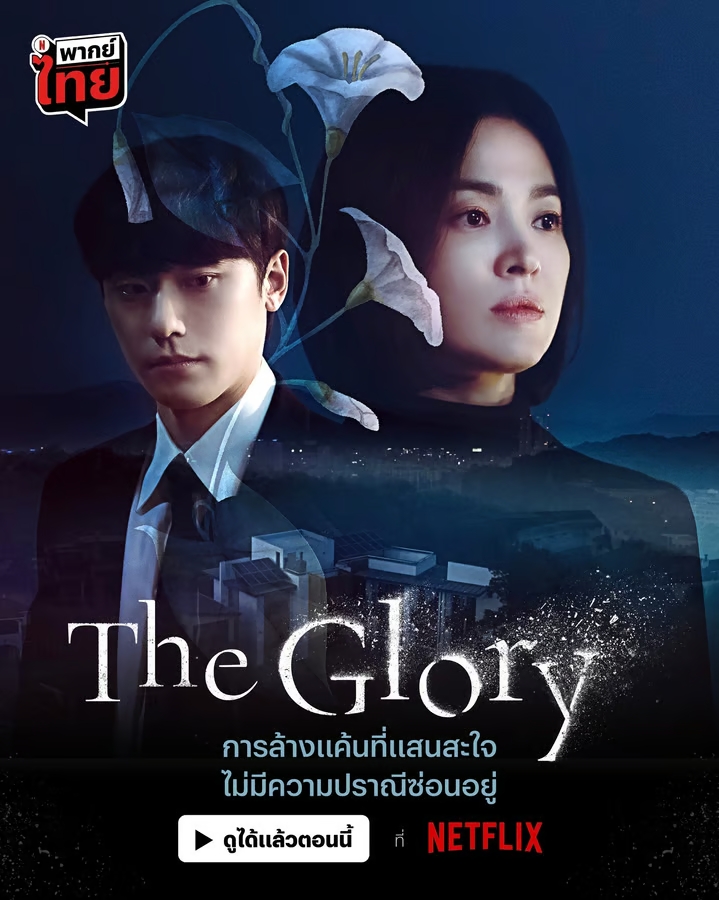 มาดูหนังออนไลน์กับเว็บไซต์ดูหนังแห่งปี 2024 กันไหมล่ะขอรับ กับพวกเรา หนังออนไลน์ ที่จะให้ท่านได้สนุกแล้วก็เพลินใจไปกับการดูหนังแบบสุดๆดูหนังออนไลน์แบบเพลินๆดูหนังแบบฟินๆไม่มีอะไรขวางกั้น สามารถดูผ่านเครื่องใช้ไม้สอยอะไรก็ได้ คอมพิวเตอร์ โน้ตบุ๊ก แท็ปเล็ต ไอแพด หรือโทรศัพท์เคลื่อนที่อีกทั้งระบบ iOS และ Android ก็สามารถดูได้แบบฟินๆอย่าพลาดทุกหนังดี ซีรีส์เด็ด คลิกเลย!
มาดูหนังออนไลน์กับเว็บไซต์ดูหนังแห่งปี 2024 กันไหมล่ะขอรับ กับพวกเรา หนังออนไลน์ ที่จะให้ท่านได้สนุกแล้วก็เพลินใจไปกับการดูหนังแบบสุดๆดูหนังออนไลน์แบบเพลินๆดูหนังแบบฟินๆไม่มีอะไรขวางกั้น สามารถดูผ่านเครื่องใช้ไม้สอยอะไรก็ได้ คอมพิวเตอร์ โน้ตบุ๊ก แท็ปเล็ต ไอแพด หรือโทรศัพท์เคลื่อนที่อีกทั้งระบบ iOS และ Android ก็สามารถดูได้แบบฟินๆอย่าพลาดทุกหนังดี ซีรีส์เด็ด คลิกเลย! …
… Pg77 สล็อตเว็บตรงไม่ผ่านเอเย่นต์ที่มาแรงที่สุดในขณะนี้ สมัครสมาชิกแล้วมาลองกันได้เลย!
Pg77 สล็อตเว็บตรงไม่ผ่านเอเย่นต์ที่มาแรงที่สุดในขณะนี้ สมัครสมาชิกแล้วมาลองกันได้เลย! ลงทะเบียนแล้วมารับโปรโมชั่นดีๆกันได้เลย กับโปรโมชั่นสมาชิกใหม่ รับโบนัส 50% จาก PG77
ลงทะเบียนแล้วมารับโปรโมชั่นดีๆกันได้เลย กับโปรโมชั่นสมาชิกใหม่ รับโบนัส 50% จาก PG77 4 เคล็ดลับสำหรับการทำเงินง่ายๆจากการเล่นสล็อตออนไลน์กับ pgslot
4 เคล็ดลับสำหรับการทำเงินง่ายๆจากการเล่นสล็อตออนไลน์กับ pgslot
 แถมยังมีระบบระเบียบการใช้แรงงาน ที่ออกจะอำนวย ความสะดวกสบาย รองรับ ทุกการลงทุน ฝากง่าย ถอนคล่อง ทุกระบบไม่มีอย่างน้อย และยังคงมาพร้อม กับการการันตี การผลิตรายได้ กับ สล็อต168 การได้เงินรางวัล แจ็คพอต กับคุณภาพสูงมูลค่าดี รวมทั้งยังคงสร้างความสนุก เร้าใจ แถมยังคง มีโปรโมชั่นเยอะมาก ให้เลือกเล่นอีกเพียบ สมัครง่ายรายได้ดี ทำเงินจริง ถอนง่าย ถอนคล่อง โบนัสสปินดี เยอะที่สุด แตกบ่อยครั้งที่สุด ทำให้ผู้เล่น สามารถเข้าถึง มูลเหตุที่ออกจะเด่นชัดว่า นี่เป็น เว็บไซต์แท้ สล็อตเว็บตรง ของแท้ เพื่อคุณโดยยิ่งไปกว่านั้น
แถมยังมีระบบระเบียบการใช้แรงงาน ที่ออกจะอำนวย ความสะดวกสบาย รองรับ ทุกการลงทุน ฝากง่าย ถอนคล่อง ทุกระบบไม่มีอย่างน้อย และยังคงมาพร้อม กับการการันตี การผลิตรายได้ กับ สล็อต168 การได้เงินรางวัล แจ็คพอต กับคุณภาพสูงมูลค่าดี รวมทั้งยังคงสร้างความสนุก เร้าใจ แถมยังคง มีโปรโมชั่นเยอะมาก ให้เลือกเล่นอีกเพียบ สมัครง่ายรายได้ดี ทำเงินจริง ถอนง่าย ถอนคล่อง โบนัสสปินดี เยอะที่สุด แตกบ่อยครั้งที่สุด ทำให้ผู้เล่น สามารถเข้าถึง มูลเหตุที่ออกจะเด่นชัดว่า นี่เป็น เว็บไซต์แท้ สล็อตเว็บตรง ของแท้ เพื่อคุณโดยยิ่งไปกว่านั้น เข้าเล่นสล็อต สล็อต168 สด แบบเรียลไทม์ เร็วทันใจ
เข้าเล่นสล็อต สล็อต168 สด แบบเรียลไทม์ เร็วทันใจ คุณสามารถบันเทิงใจ ไปกับการเล่นสล็อต สล็อต168 ได้แบบใหม่ๆพร้อมการันตี กระบวนการทำเงินได้ โดยตลอด และเร็วทันใจ ทุกวิถีทาง ผ่านเว็บตรง เล่นได้แบบ Real Time อัพเดทใหม่ ใช้งานดี มีประโยชน์ประดิษฐ์รายได้ อย่างสม่ำเสมอ แตกเสร็จ ถอนได้เลย ในทันที หมดปัญหา เรื่องที่เกี่ยวข้องกับการถอนเงิน ล่าช้าหรือ ยุ่งยากอีกต่อไป พร้อมระบบ สล็อต168 การฝากเงิน ถอนเงิน ที่ไม่เหมือนใคร พร้อมประสิทธิภาพ จัดหนัก จัดเต็ม กว่าที่คุณคิด ลงทะเบียน วันนี้ พร้อมสิทธิพิเศษ สล็อตเว็บตรง เครดิตฟรีล้นหลาม พร้อมแจกจริง จัดเต็มได้เงินดี และก็เป็นประโยชน์ กว่าที่คุณอยากได้
คุณสามารถบันเทิงใจ ไปกับการเล่นสล็อต สล็อต168 ได้แบบใหม่ๆพร้อมการันตี กระบวนการทำเงินได้ โดยตลอด และเร็วทันใจ ทุกวิถีทาง ผ่านเว็บตรง เล่นได้แบบ Real Time อัพเดทใหม่ ใช้งานดี มีประโยชน์ประดิษฐ์รายได้ อย่างสม่ำเสมอ แตกเสร็จ ถอนได้เลย ในทันที หมดปัญหา เรื่องที่เกี่ยวข้องกับการถอนเงิน ล่าช้าหรือ ยุ่งยากอีกต่อไป พร้อมระบบ สล็อต168 การฝากเงิน ถอนเงิน ที่ไม่เหมือนใคร พร้อมประสิทธิภาพ จัดหนัก จัดเต็ม กว่าที่คุณคิด ลงทะเบียน วันนี้ พร้อมสิทธิพิเศษ สล็อตเว็บตรง เครดิตฟรีล้นหลาม พร้อมแจกจริง จัดเต็มได้เงินดี และก็เป็นประโยชน์ กว่าที่คุณอยากได้ สร้างกำไรได้ แบบสดๆพร้อมประกัน สมรรถนะได้ อย่างเต็มที่ สร้างผลกำไรได้ แบบเต็มความปรารถนา พร้อมช่องทางเลือกใดก็ได้ ซึ่งสามารถทำเงินได้จริง แล้วก็ สล็อต168 ยังคงเป็นอีก รูปแบบของการลงทะเบียนได้ง่าย ไม่มีผิดหวัง กับระบบการเล่น เร็ว ทันใจ พร้อมวิถีทางใหม่ ที่พิเศษ พร้อมการสร้างรายได้ ผ่านระบบอัตโนมัติ ด้วย AI สุดถูกต้องแม่นยำ สามารถฝากง่าย ถอนชำนาญ ด้วยระบบที่ดี มีคุณประโยชน์ที่คุณ สามารถเข้าถึง สล็อตเว็บตรง แนวทางการทำเงินได้ นานัปการค่ายชั้นหนึ่ง จากทั่วทุกมุมโลกเยอะมาก แบบเรียลไทม์ จัดเต็ม แล้วก็เป็นประโยชน์อีกเยอะ
สร้างกำไรได้ แบบสดๆพร้อมประกัน สมรรถนะได้ อย่างเต็มที่ สร้างผลกำไรได้ แบบเต็มความปรารถนา พร้อมช่องทางเลือกใดก็ได้ ซึ่งสามารถทำเงินได้จริง แล้วก็ สล็อต168 ยังคงเป็นอีก รูปแบบของการลงทะเบียนได้ง่าย ไม่มีผิดหวัง กับระบบการเล่น เร็ว ทันใจ พร้อมวิถีทางใหม่ ที่พิเศษ พร้อมการสร้างรายได้ ผ่านระบบอัตโนมัติ ด้วย AI สุดถูกต้องแม่นยำ สามารถฝากง่าย ถอนชำนาญ ด้วยระบบที่ดี มีคุณประโยชน์ที่คุณ สามารถเข้าถึง สล็อตเว็บตรง แนวทางการทำเงินได้ นานัปการค่ายชั้นหนึ่ง จากทั่วทุกมุมโลกเยอะมาก แบบเรียลไทม์ จัดเต็ม แล้วก็เป็นประโยชน์อีกเยอะ All-in-One Platform สำหรับบริการ All-in-One Platformที่พวกเรา hyperxtech นั้น จะเป็นลักษณะของบริการเปิดเว็บพนันเต็มแบบสำหรับคนที่มึความพอใจอยากเริ่มต้นเปิดเว็บไซต์ โดยสามารถมาใช้บริการกับเราได้ โดยคุณจะได้รับสิทธิพิเศษมาก ไม่ว่าจะเป็น การเปิดให้บริการแบบครบวงจร จบในเว็บเดียวแน่นอนขอรับ สล็อต คาสิโน กีฬา หรือลอตเตอรี่ ก็มีให้ครบ มีเกมหรือคาสิโนมากยิ่งกว่า 120 ค่าย เรียกได้ว่า จัดเต็มทุกแบบอย่างแน่ๆ ทำกำไรกับการเปิดเว็บได้แบบยาวๆรายได้หลักสิบล้านบาทต่อเดือนได้อย่างง่ายๆ โดยแพงเริ่มกับ Standard Package ที่ 50,000 เท่านั้น
All-in-One Platform สำหรับบริการ All-in-One Platformที่พวกเรา hyperxtech นั้น จะเป็นลักษณะของบริการเปิดเว็บพนันเต็มแบบสำหรับคนที่มึความพอใจอยากเริ่มต้นเปิดเว็บไซต์ โดยสามารถมาใช้บริการกับเราได้ โดยคุณจะได้รับสิทธิพิเศษมาก ไม่ว่าจะเป็น การเปิดให้บริการแบบครบวงจร จบในเว็บเดียวแน่นอนขอรับ สล็อต คาสิโน กีฬา หรือลอตเตอรี่ ก็มีให้ครบ มีเกมหรือคาสิโนมากยิ่งกว่า 120 ค่าย เรียกได้ว่า จัดเต็มทุกแบบอย่างแน่ๆ ทำกำไรกับการเปิดเว็บได้แบบยาวๆรายได้หลักสิบล้านบาทต่อเดือนได้อย่างง่ายๆ โดยแพงเริ่มกับ Standard Package ที่ 50,000 เท่านั้น ขอขอบพระคุณ Ref.
ขอขอบพระคุณ Ref. 



 …
… แนะนำยอดเยี่ยมเกม pgslot มีชื่อเสียงแห่งปีจากค่าย สล็อต
แนะนำยอดเยี่ยมเกม pgslot มีชื่อเสียงแห่งปีจากค่าย สล็อต • Fortune rat:
• Fortune rat:  …
…